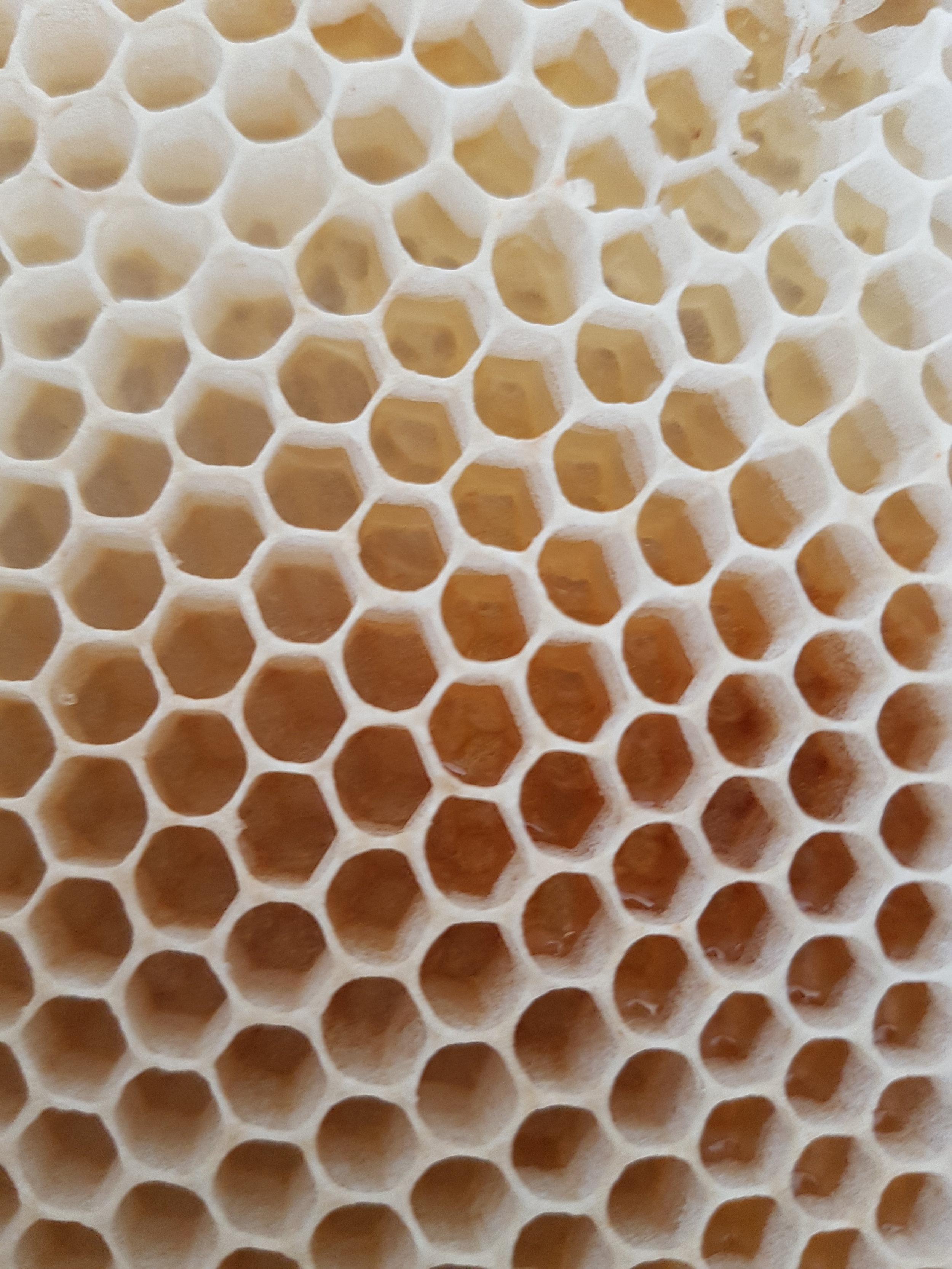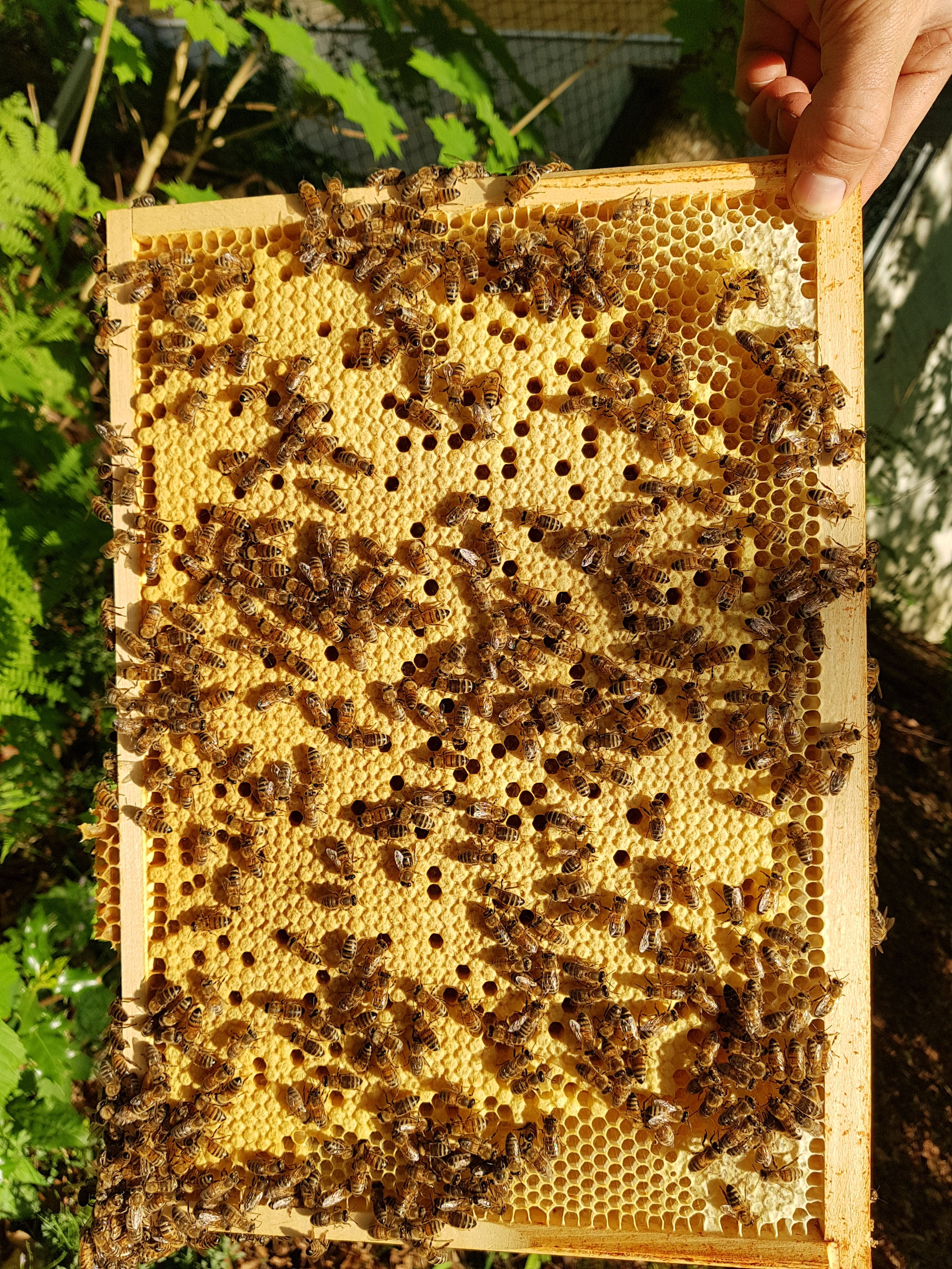Vindfløy Bybigård
Vindfløy Bybigård is a beekeeping project in downtown Bergen, named after the Vindfloy on Mt. Floyen where my first hives were placed in 2013. We, the bees and me, Manuel Hempel, run beehives from backyards to rooftops in different neighbourhoods all around town. The aim is to engage with the public and local institutions to create awareness for the city as an urban ecosystem, promote biodiversity and support local bees and pollinators by contributing to a more insect friendly environment in town. Education is a big part of our activities and in addition to workshops and presentations at different events we have welcomed several local groups, such as Spire Bergen, ALF (Integration Center), SLowfood Bergen and the Bergen International School to our apiaries in town.
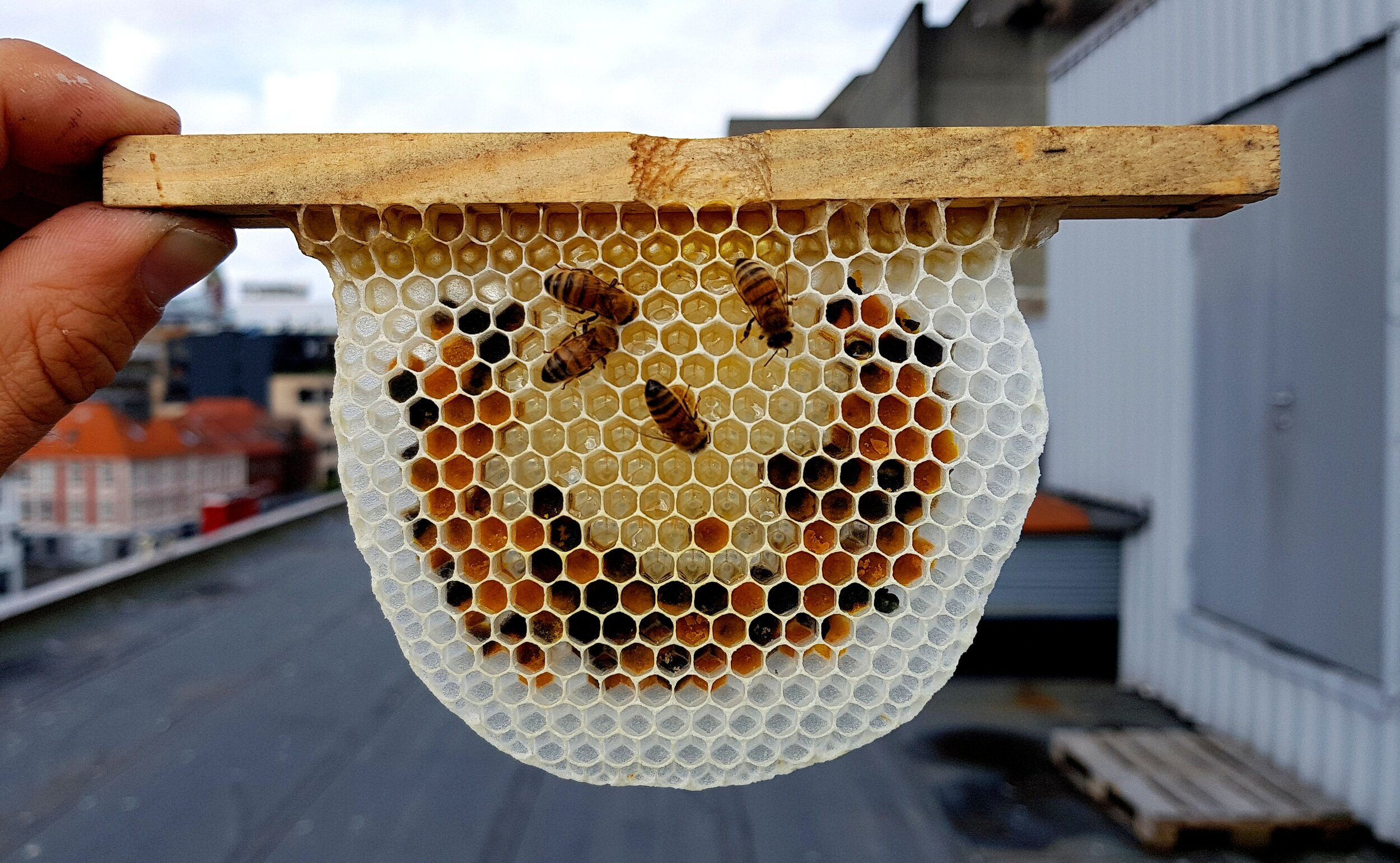
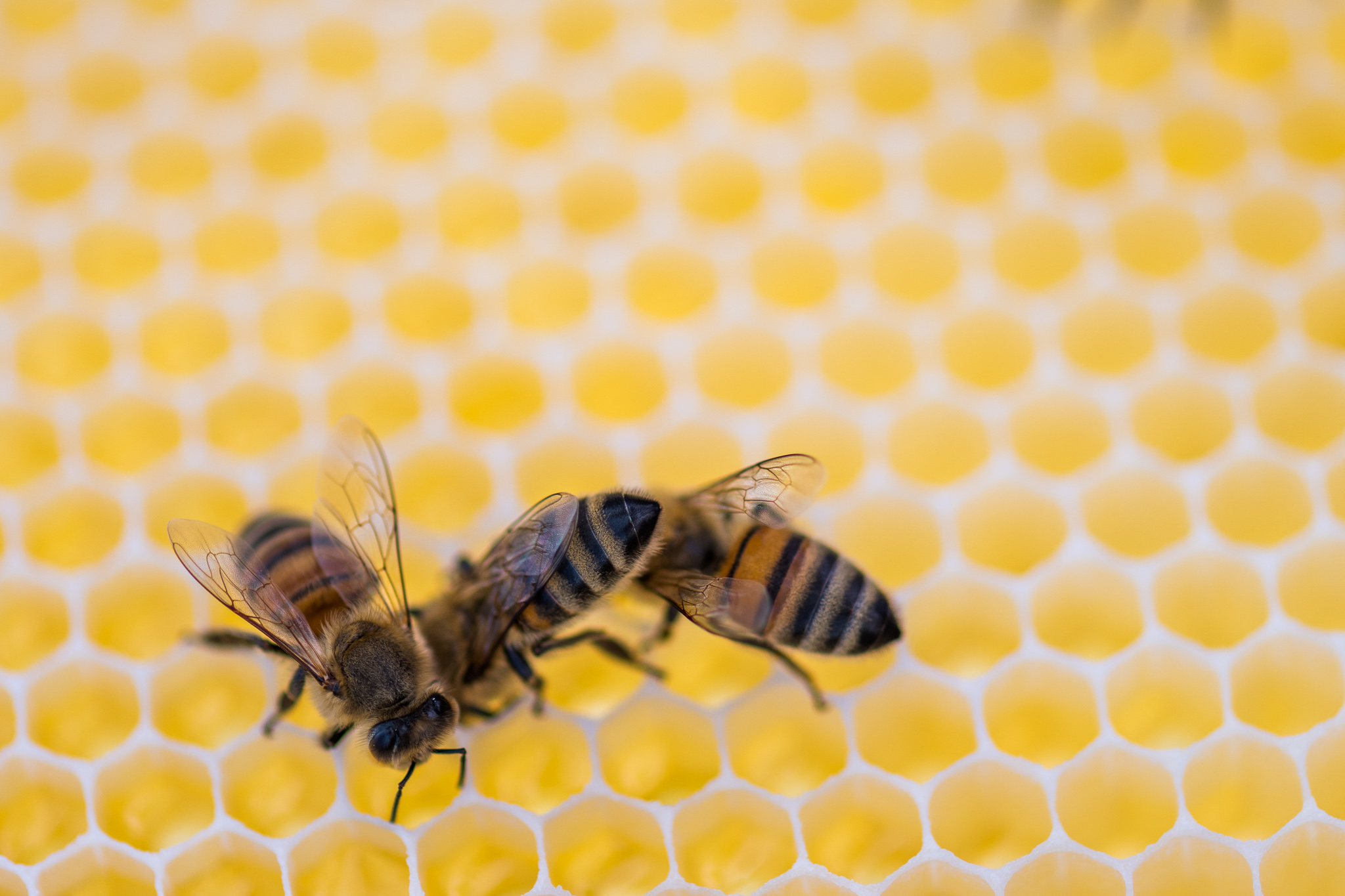
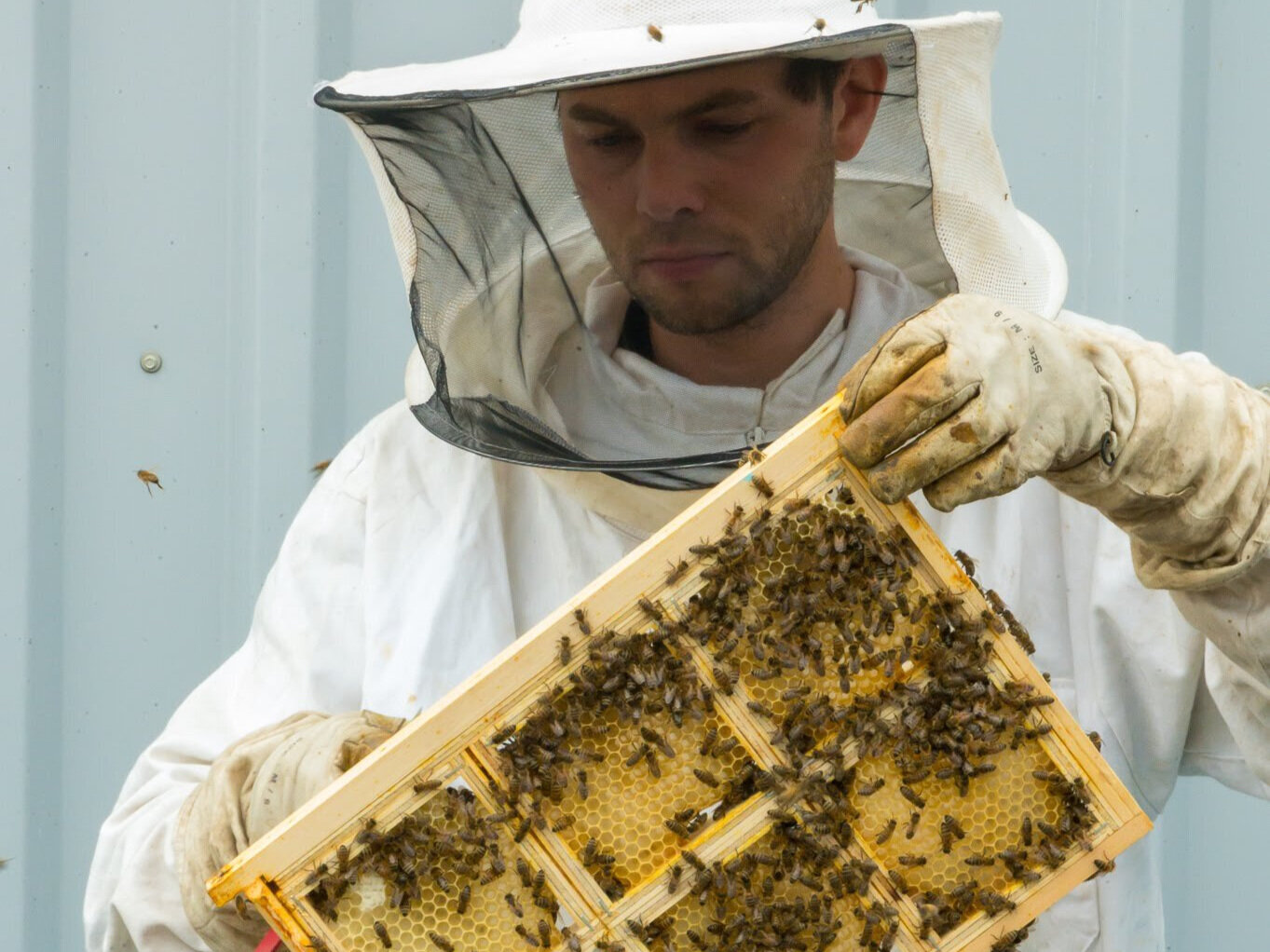
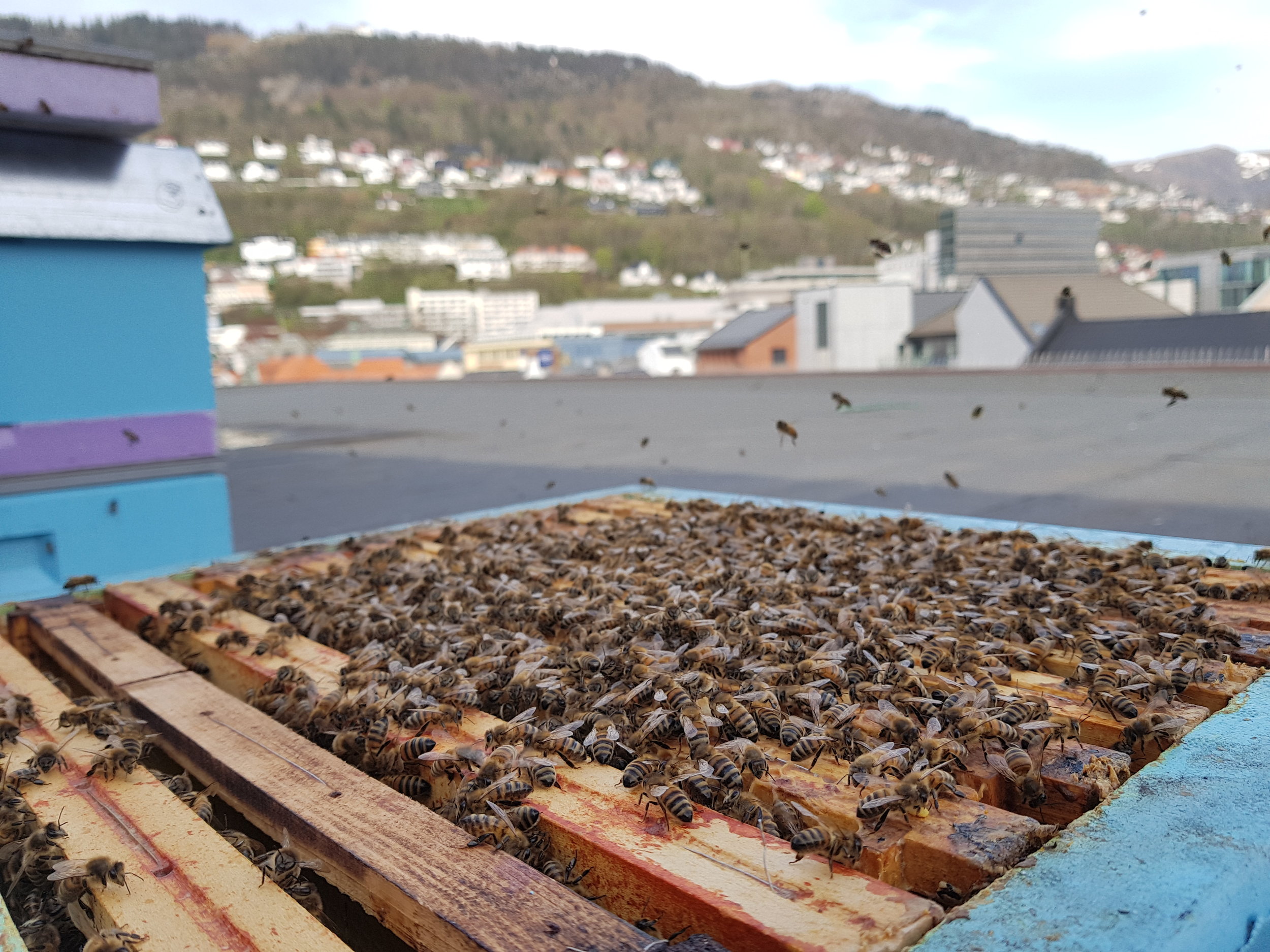

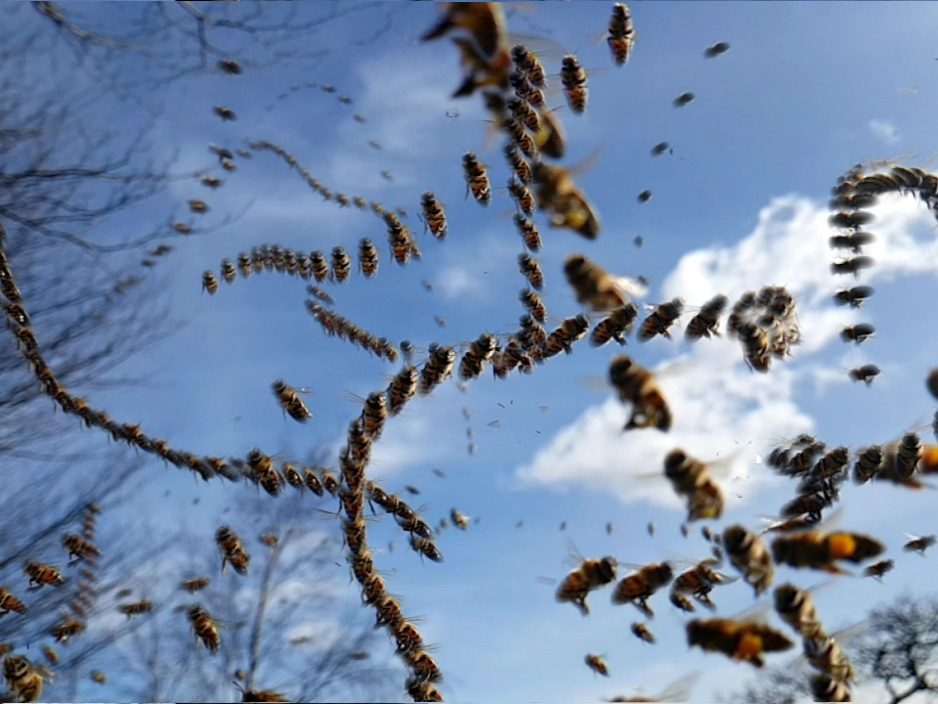
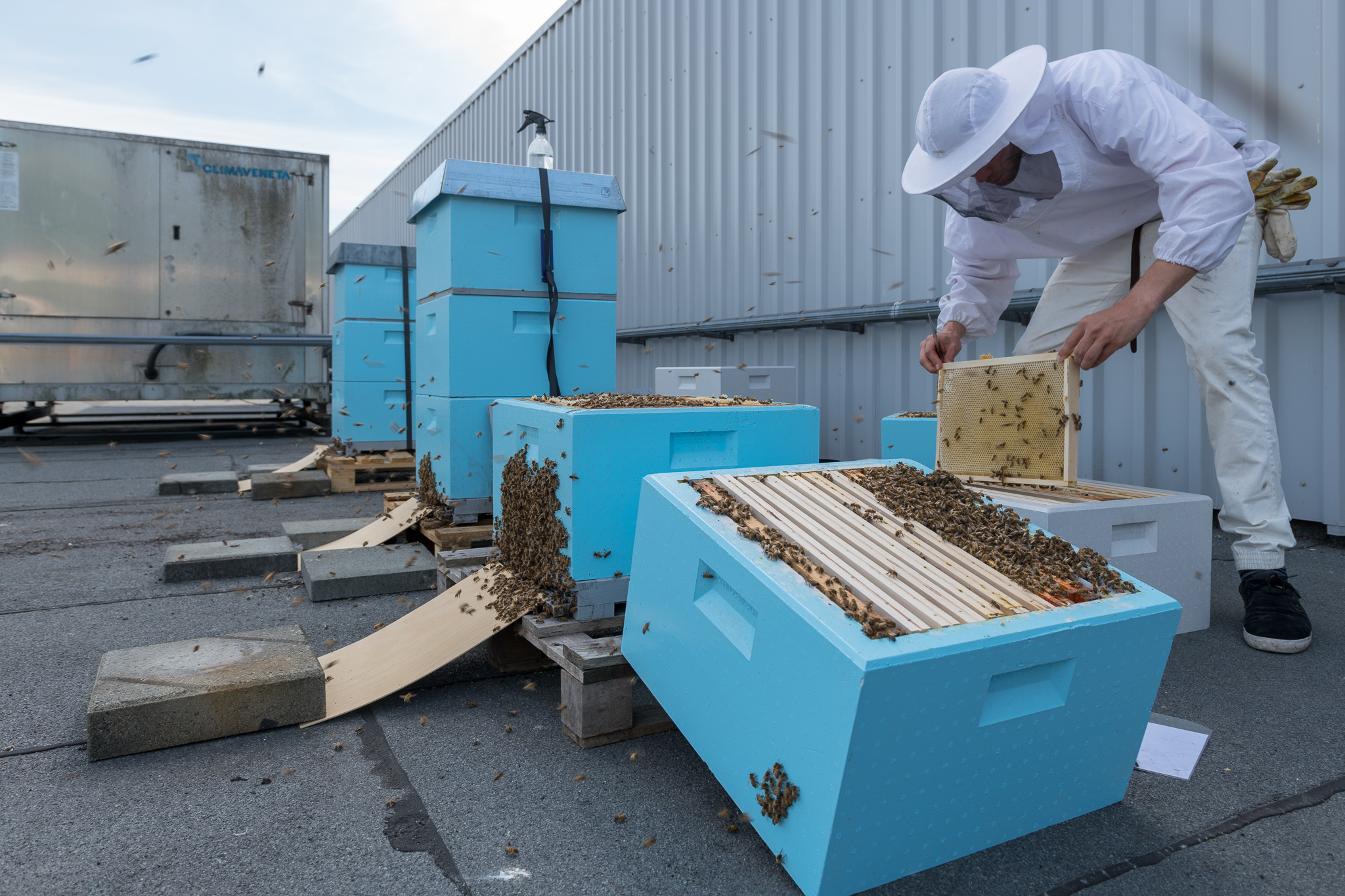
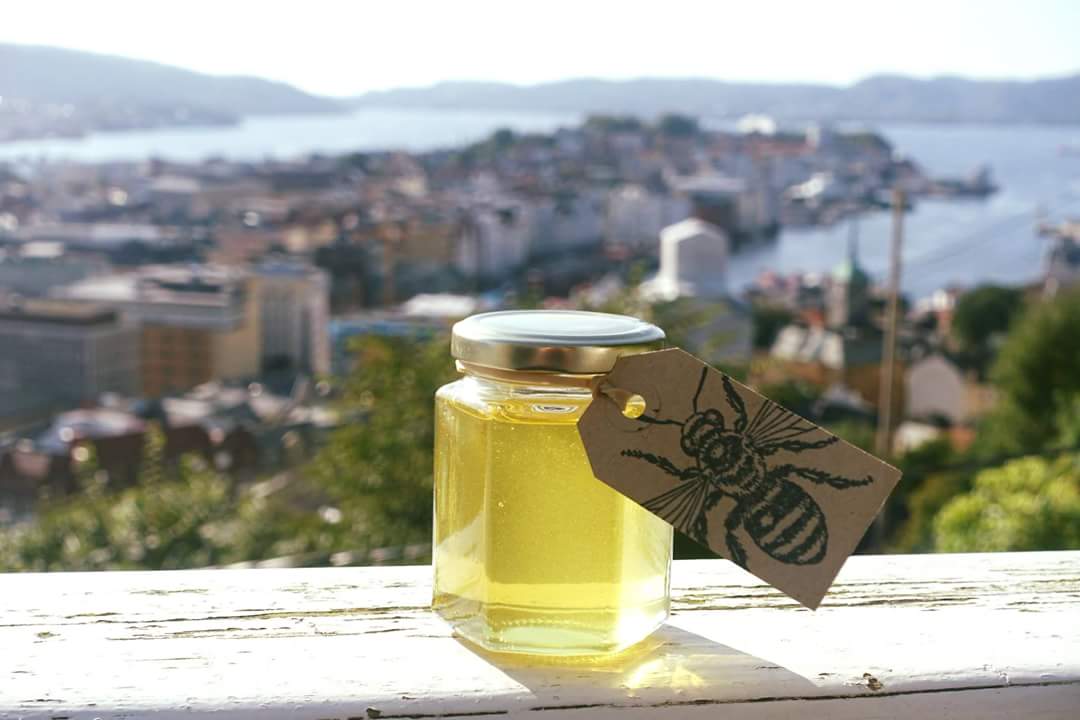
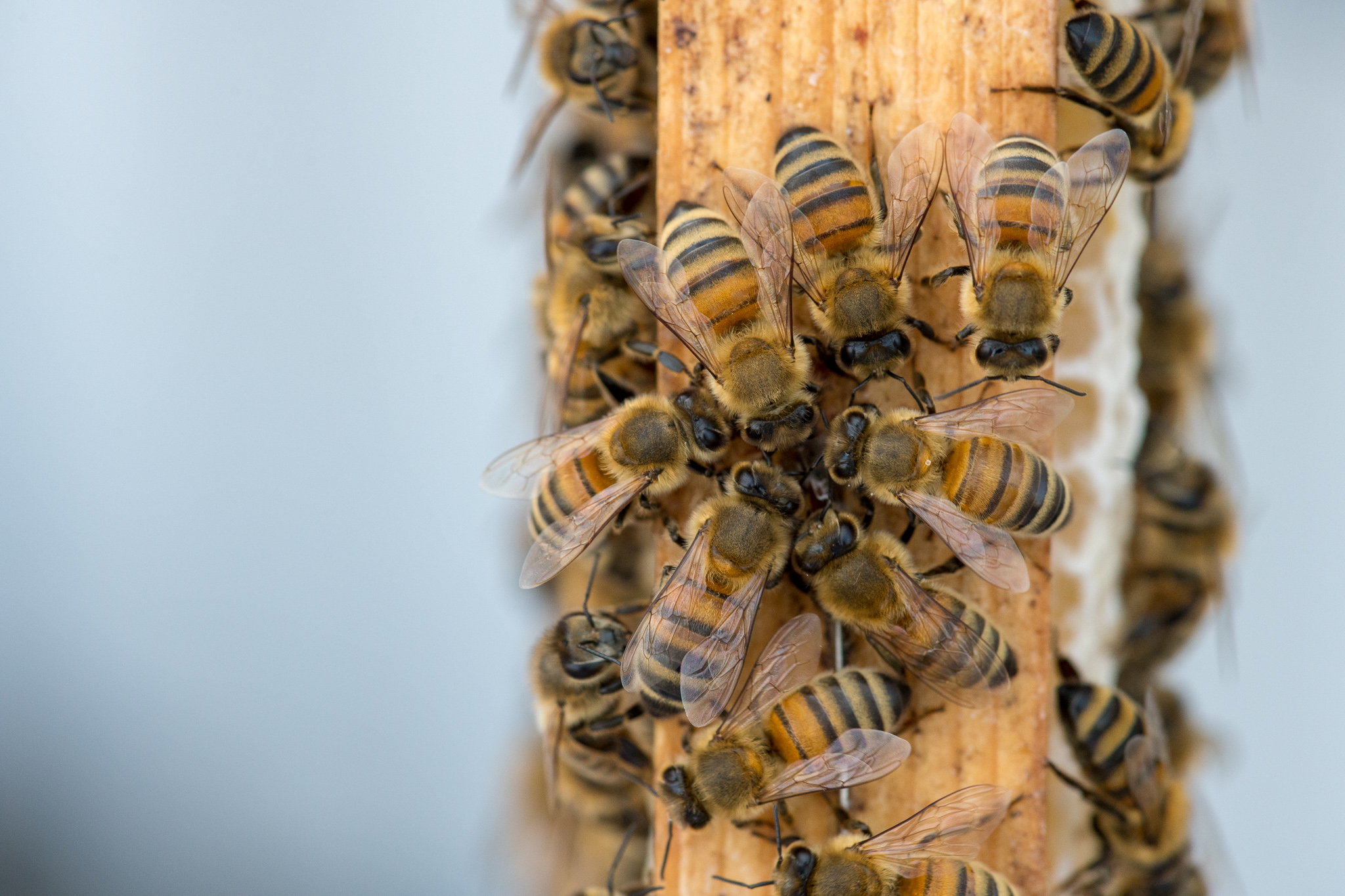
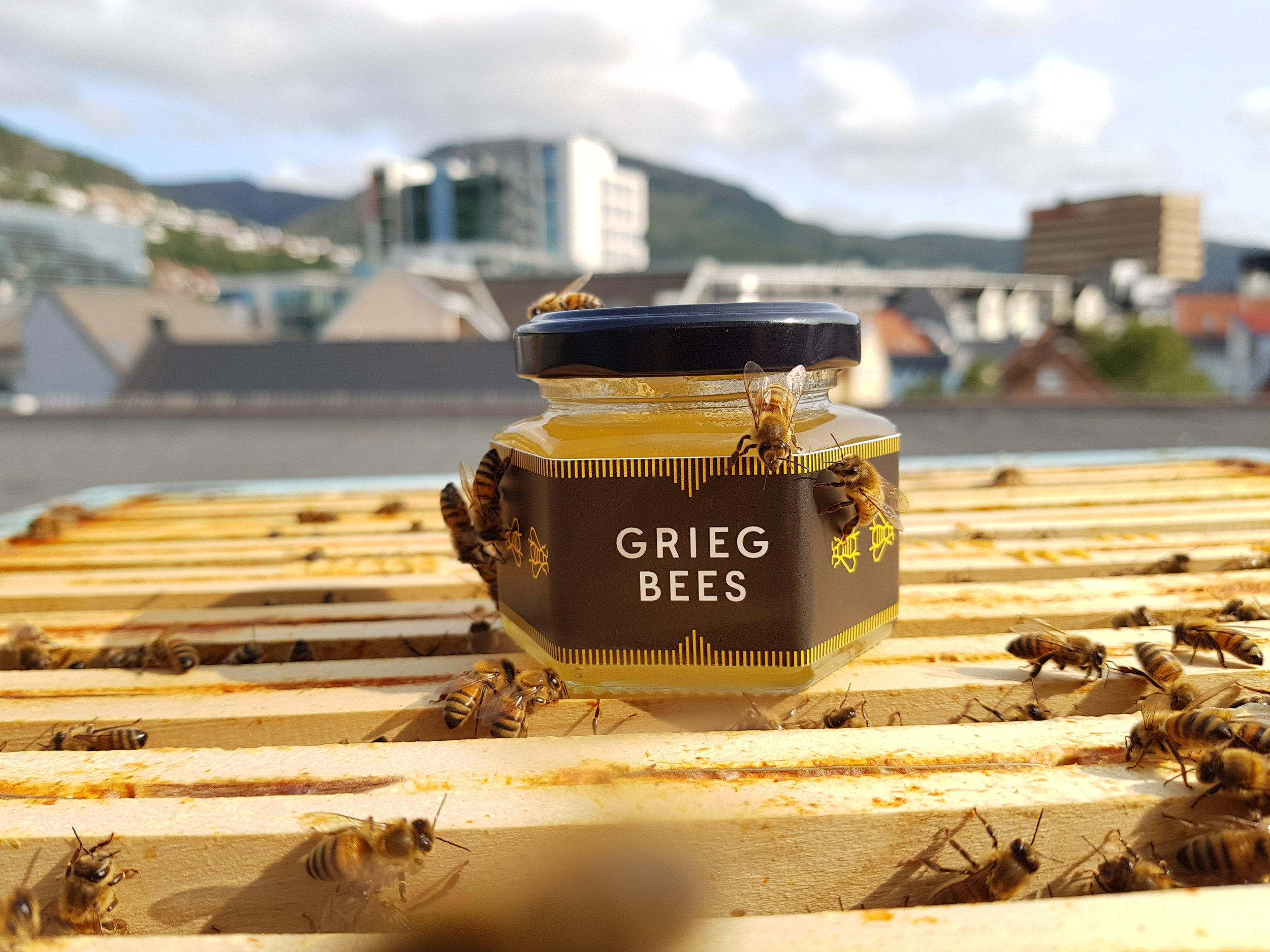
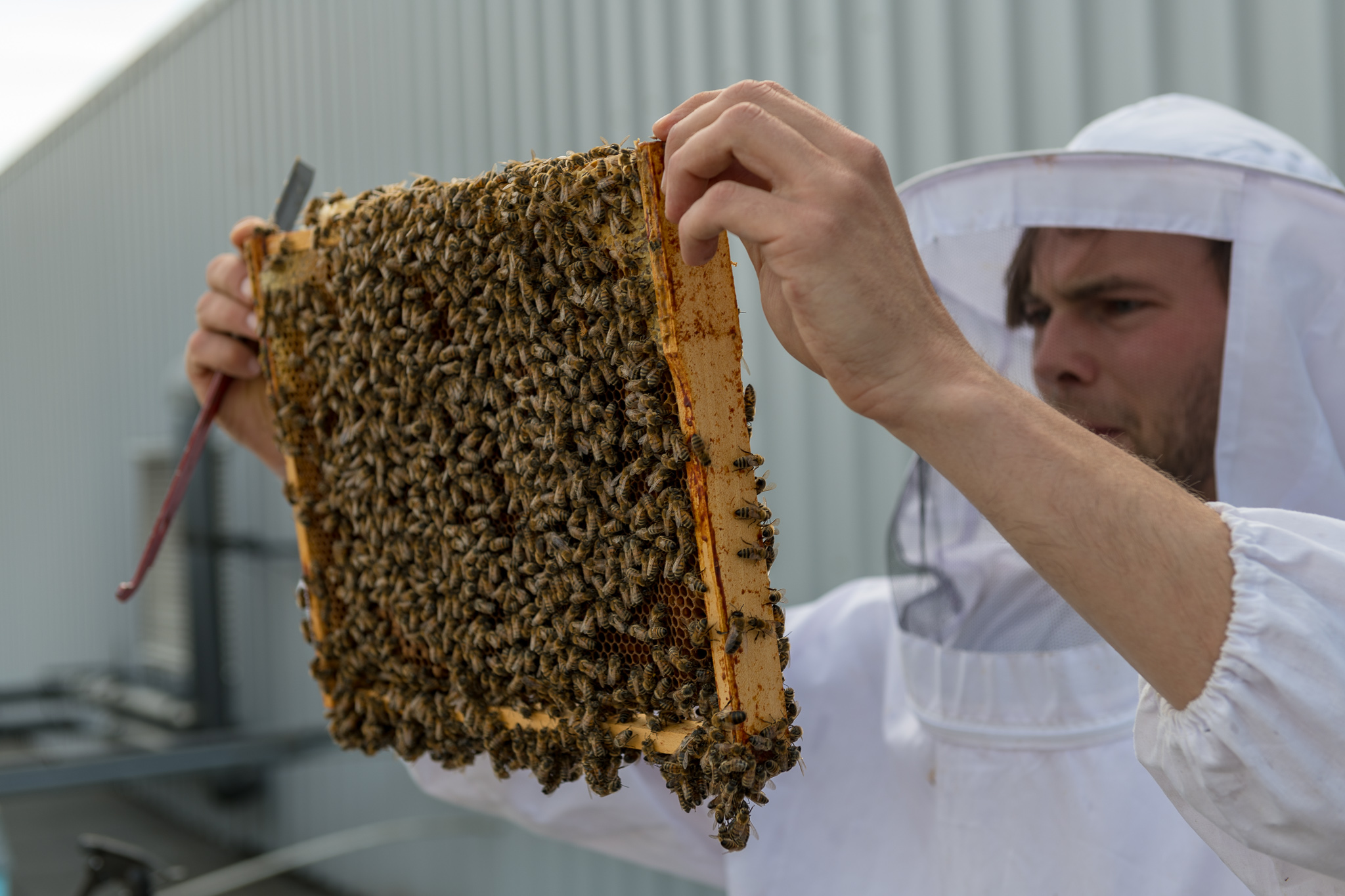

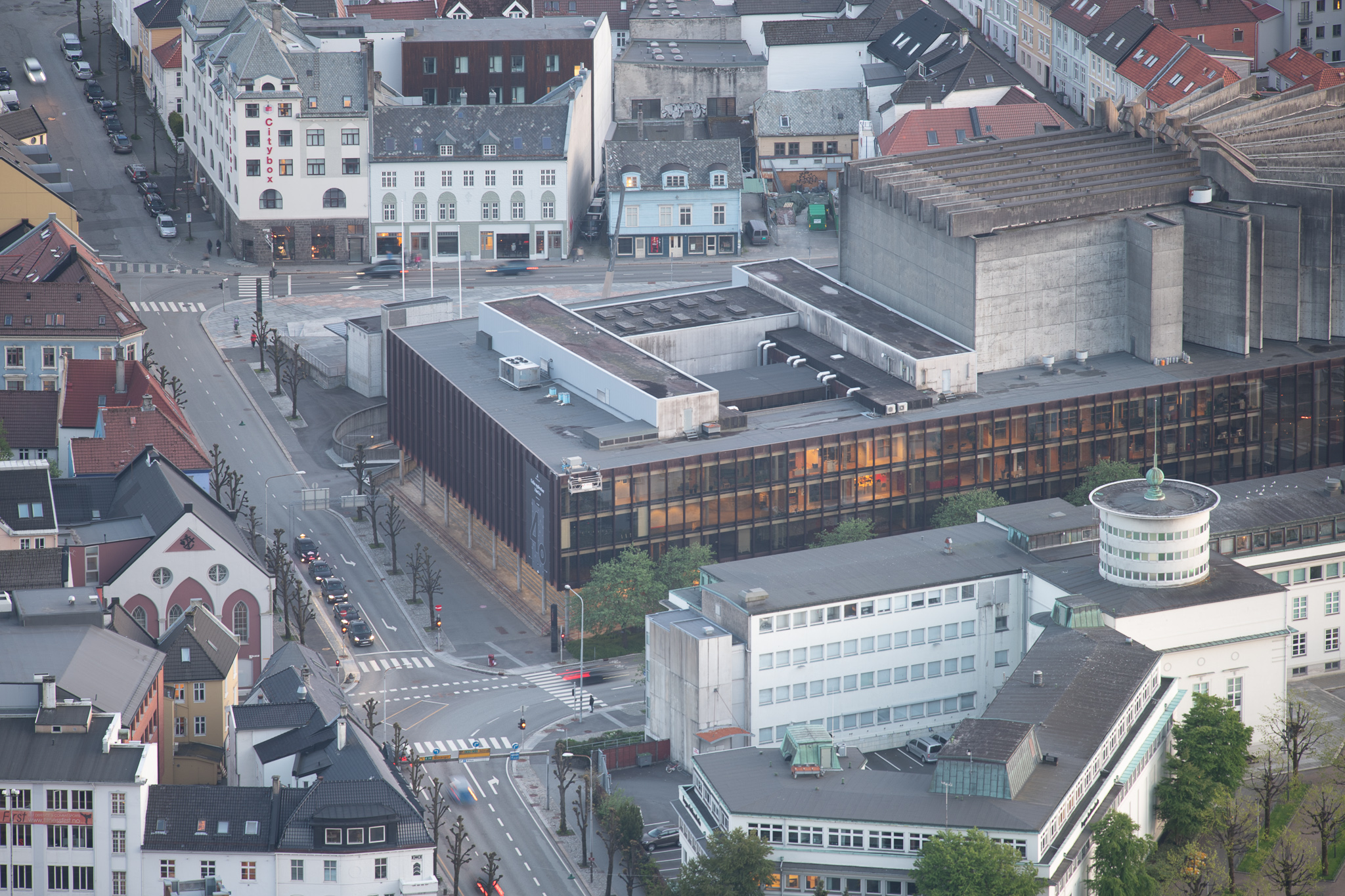
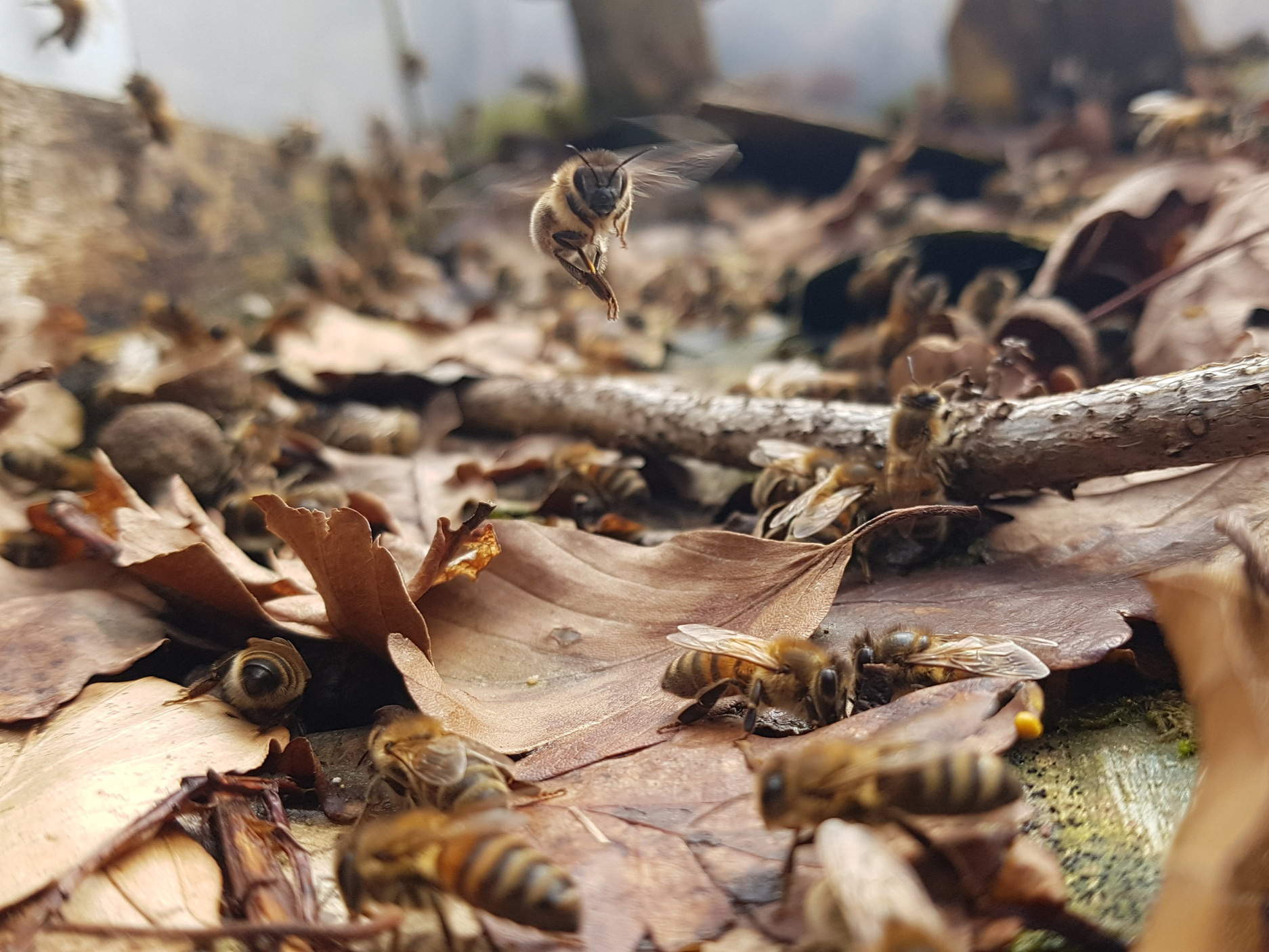
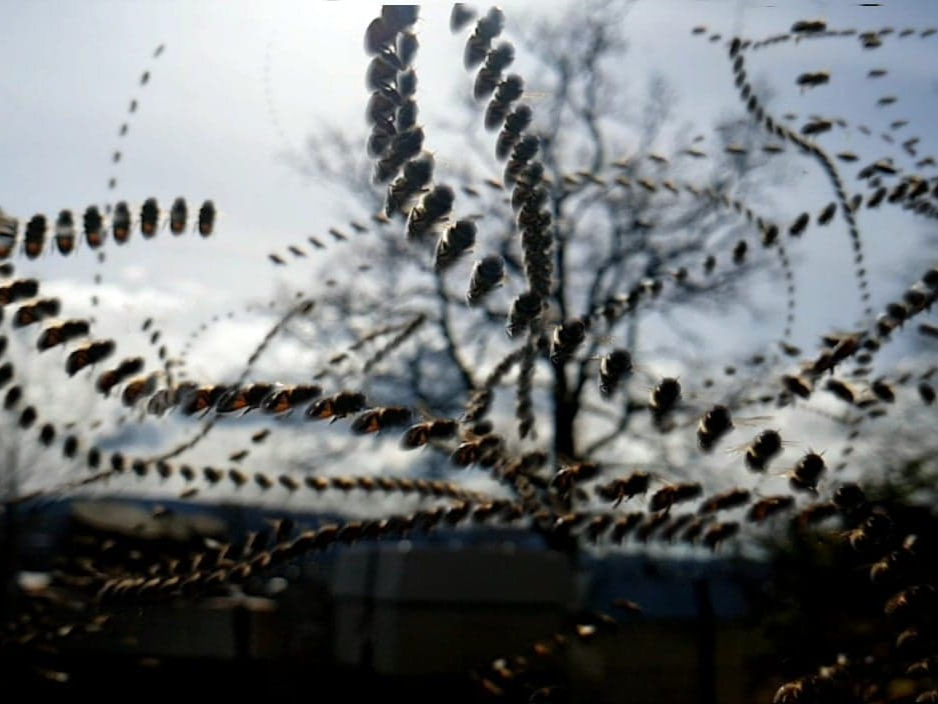
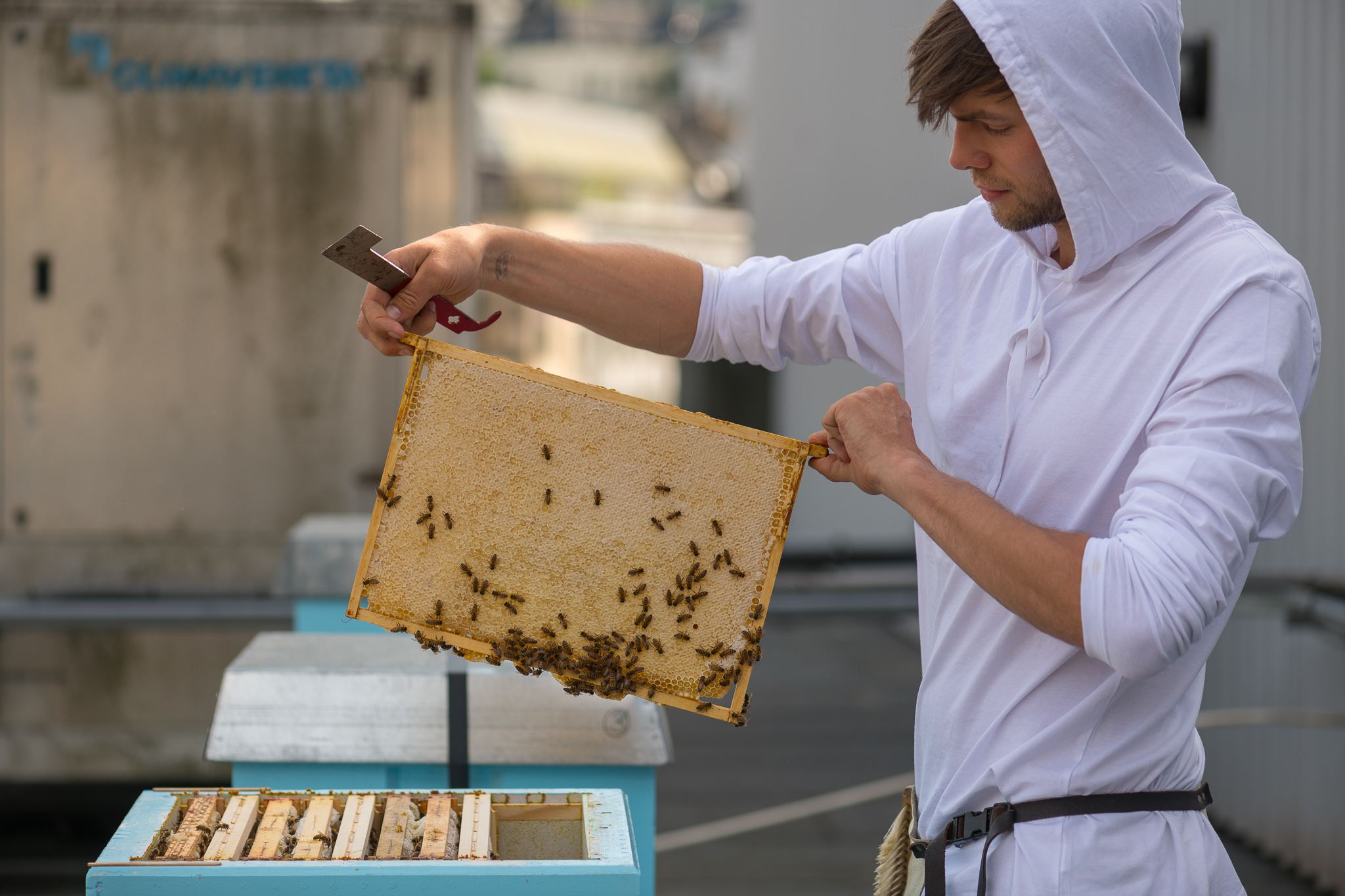
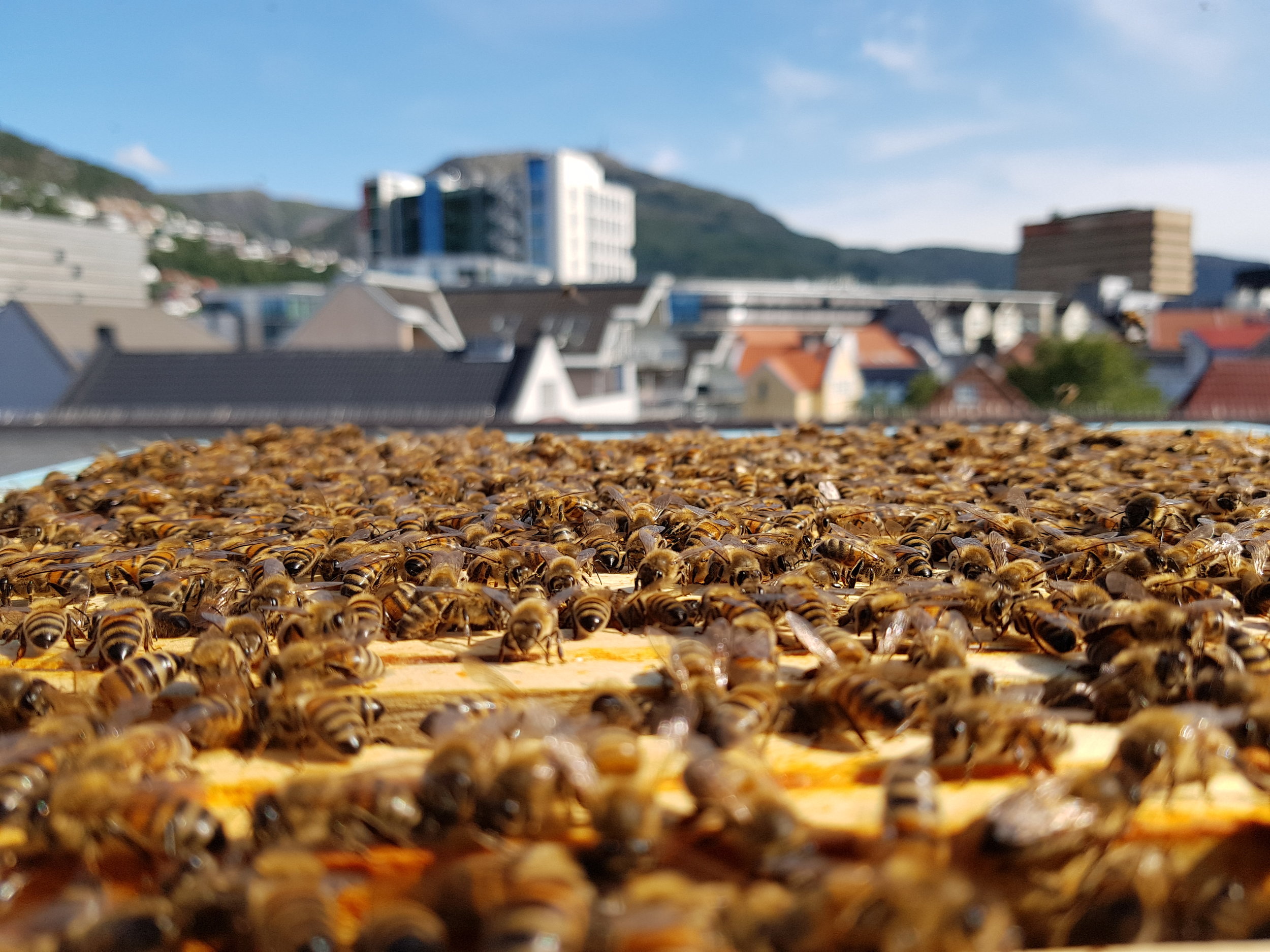
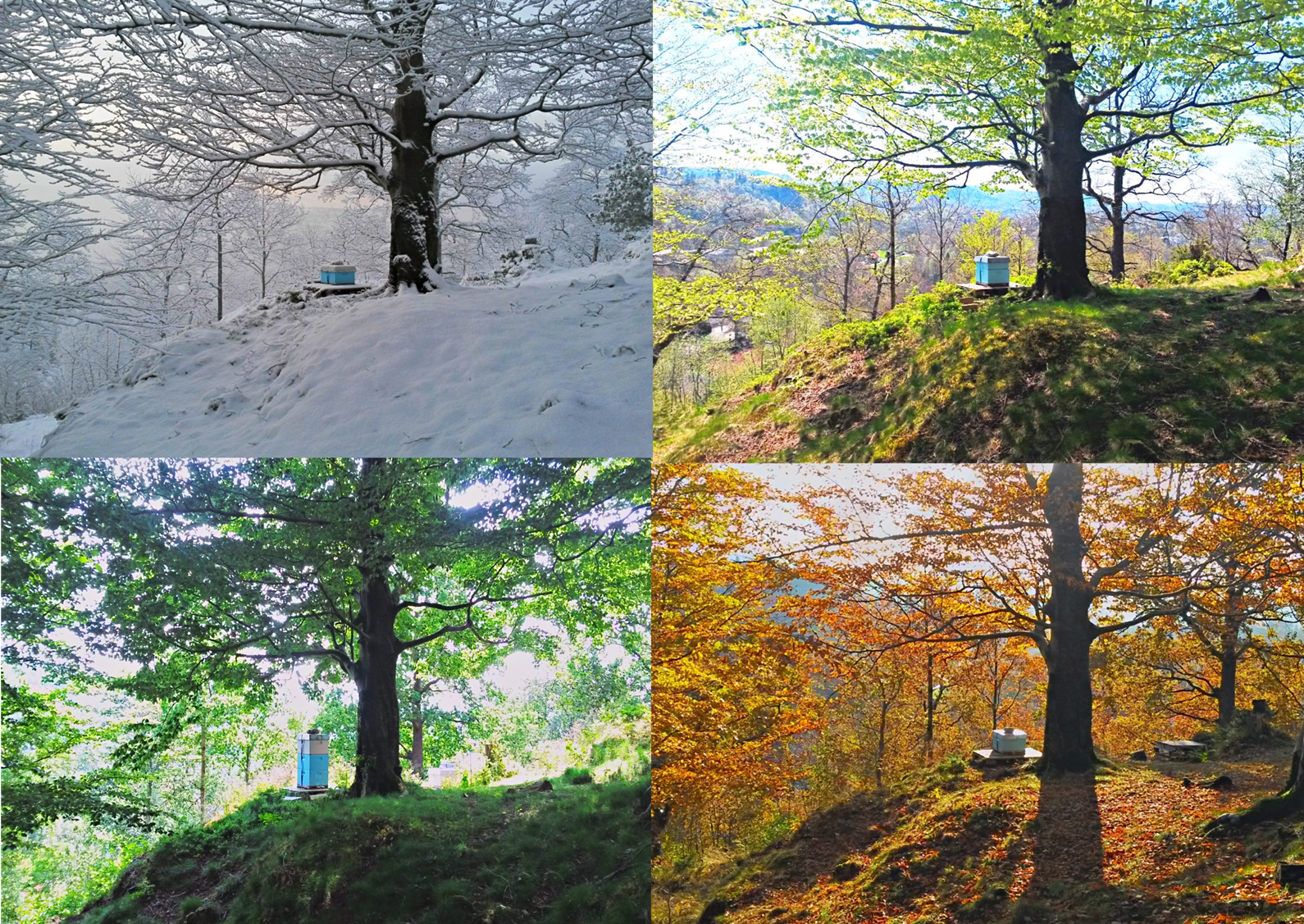
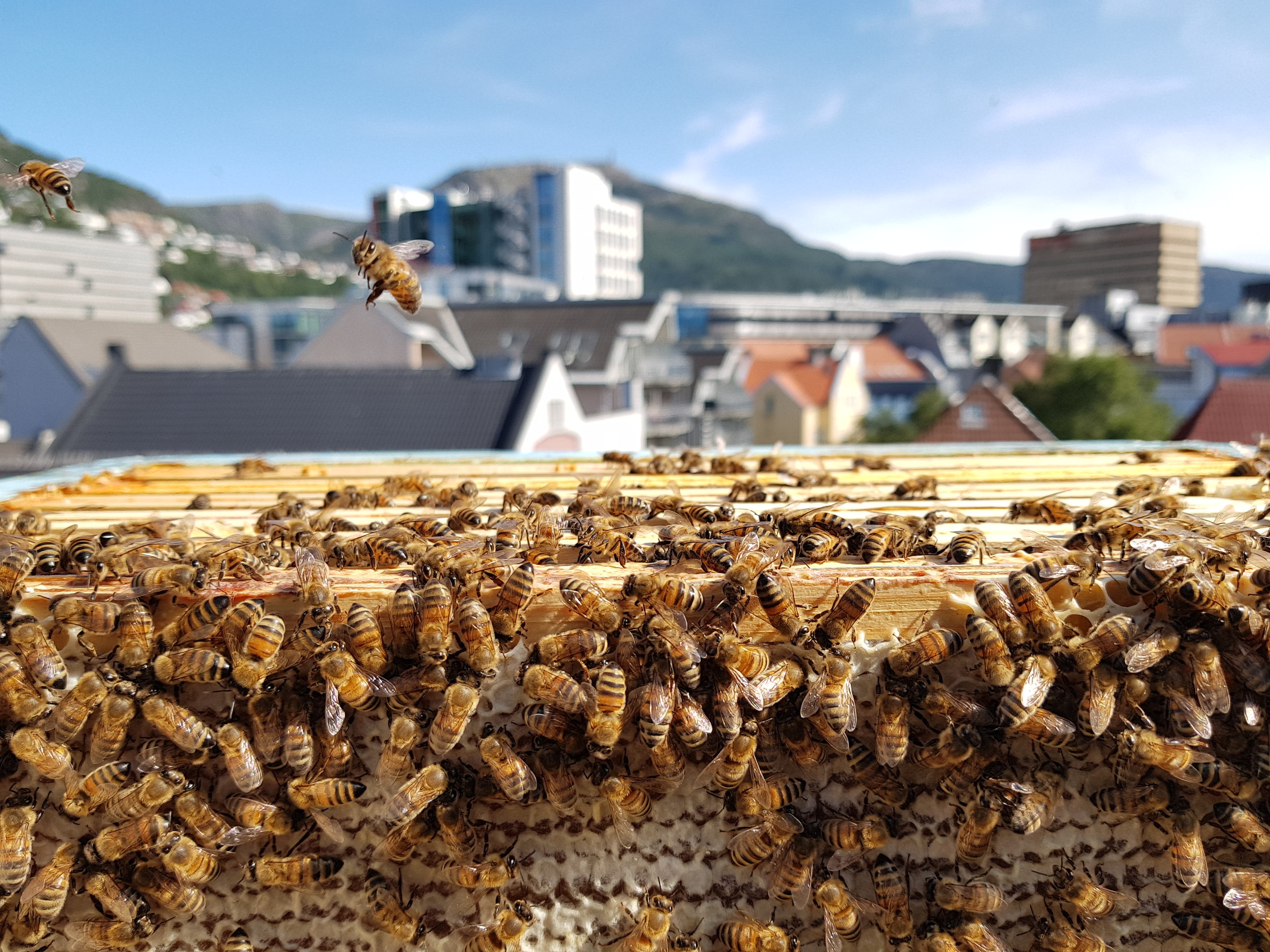
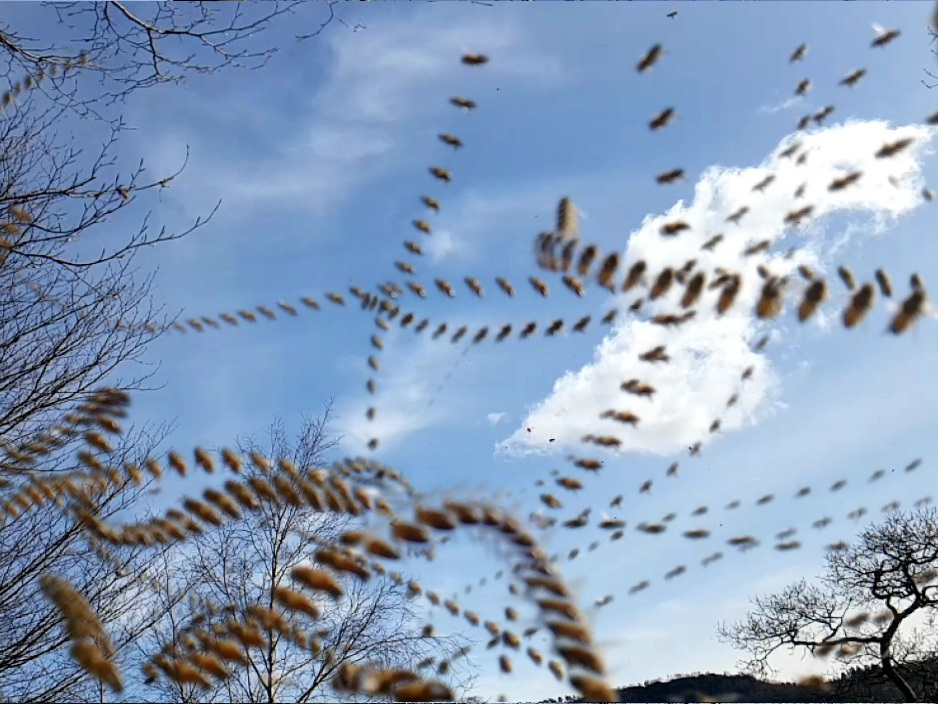
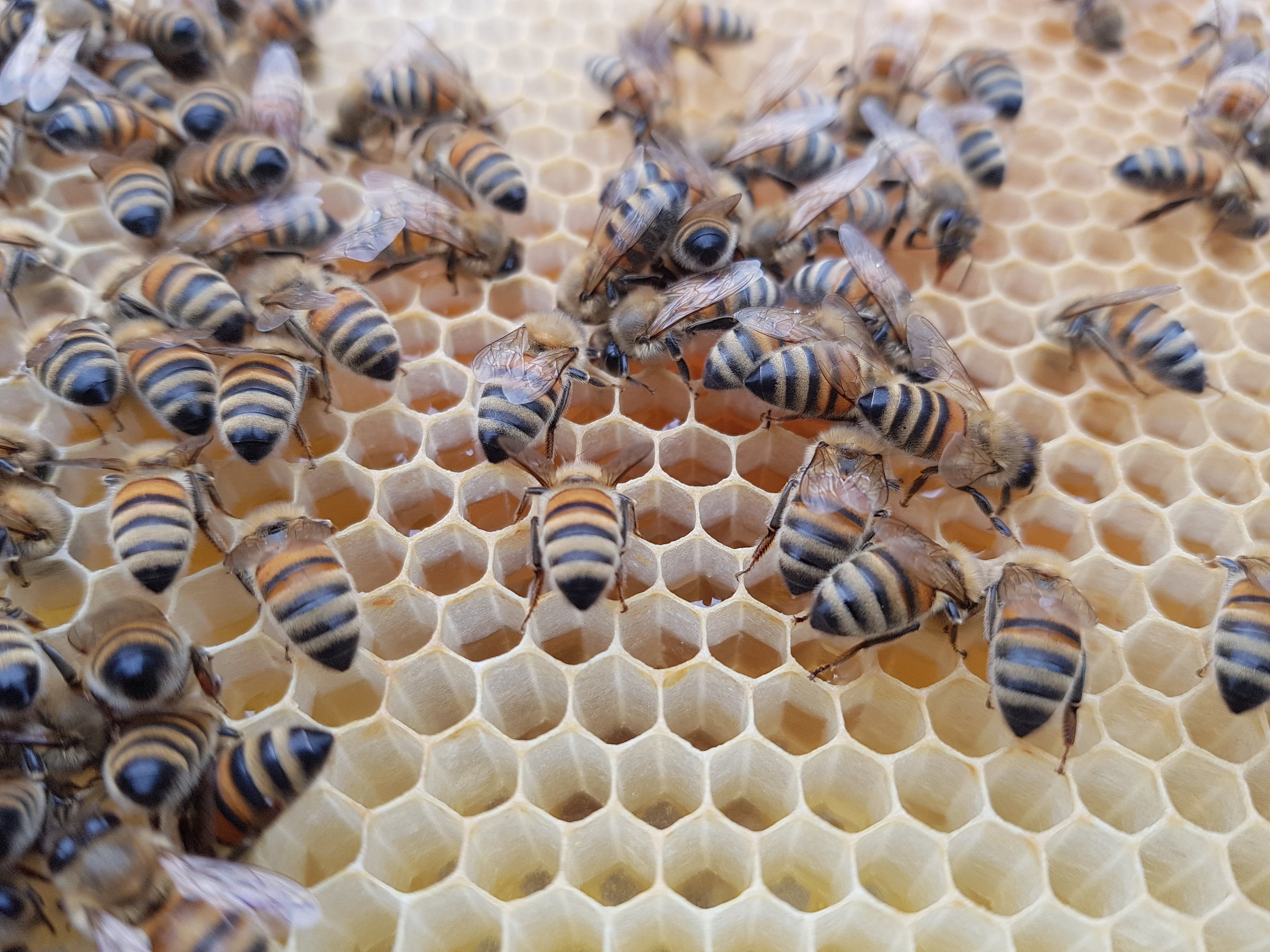
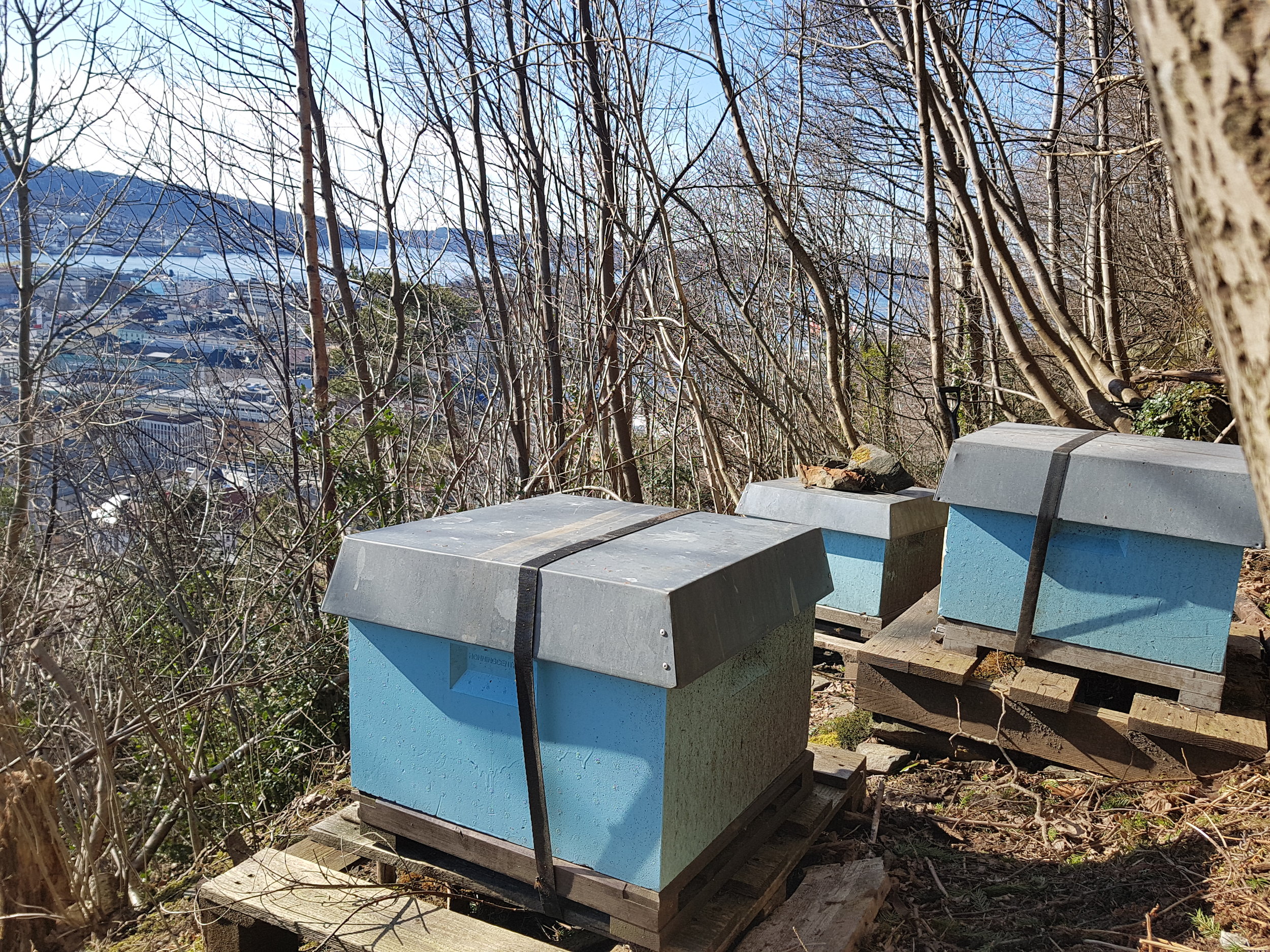

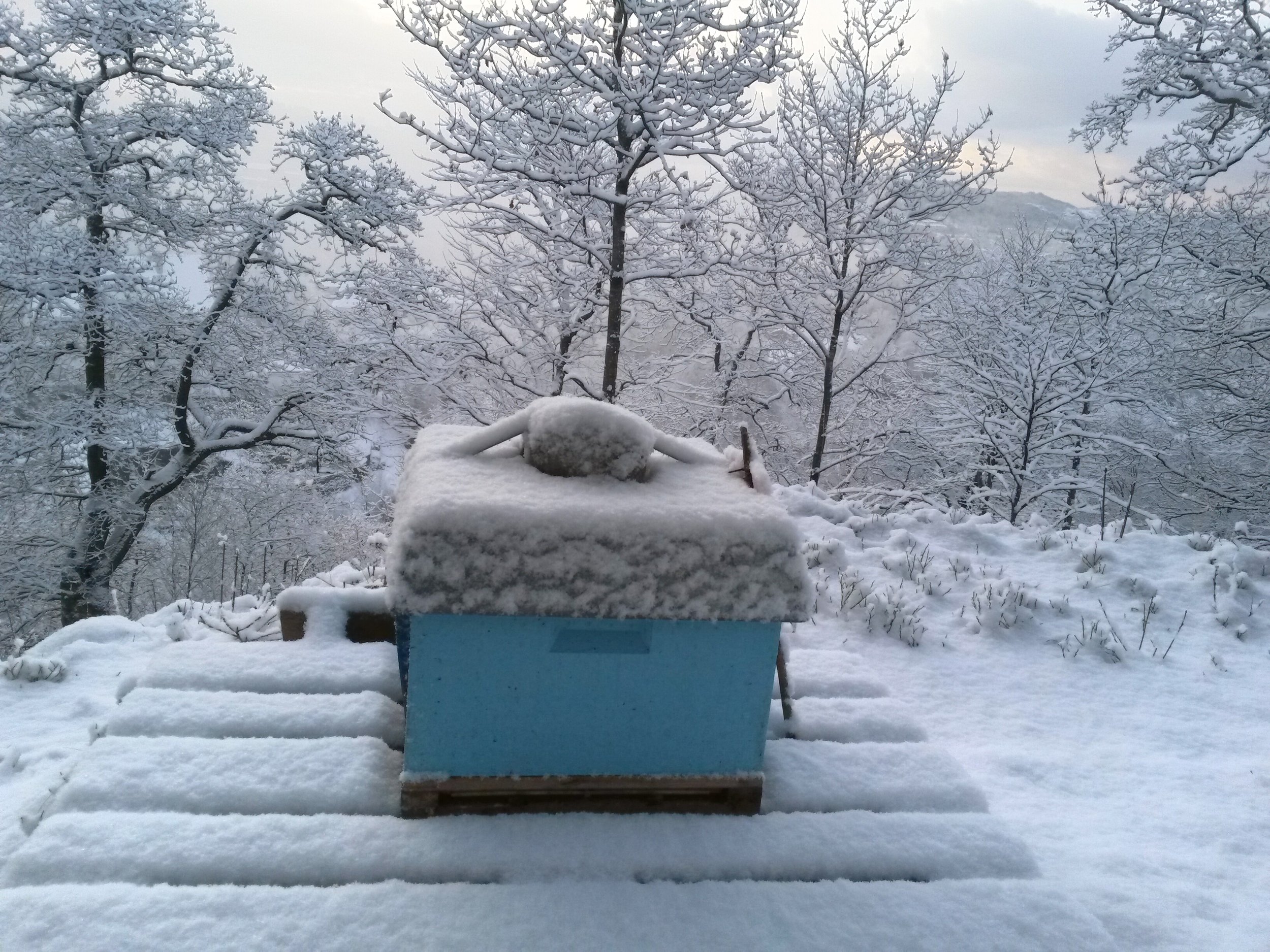
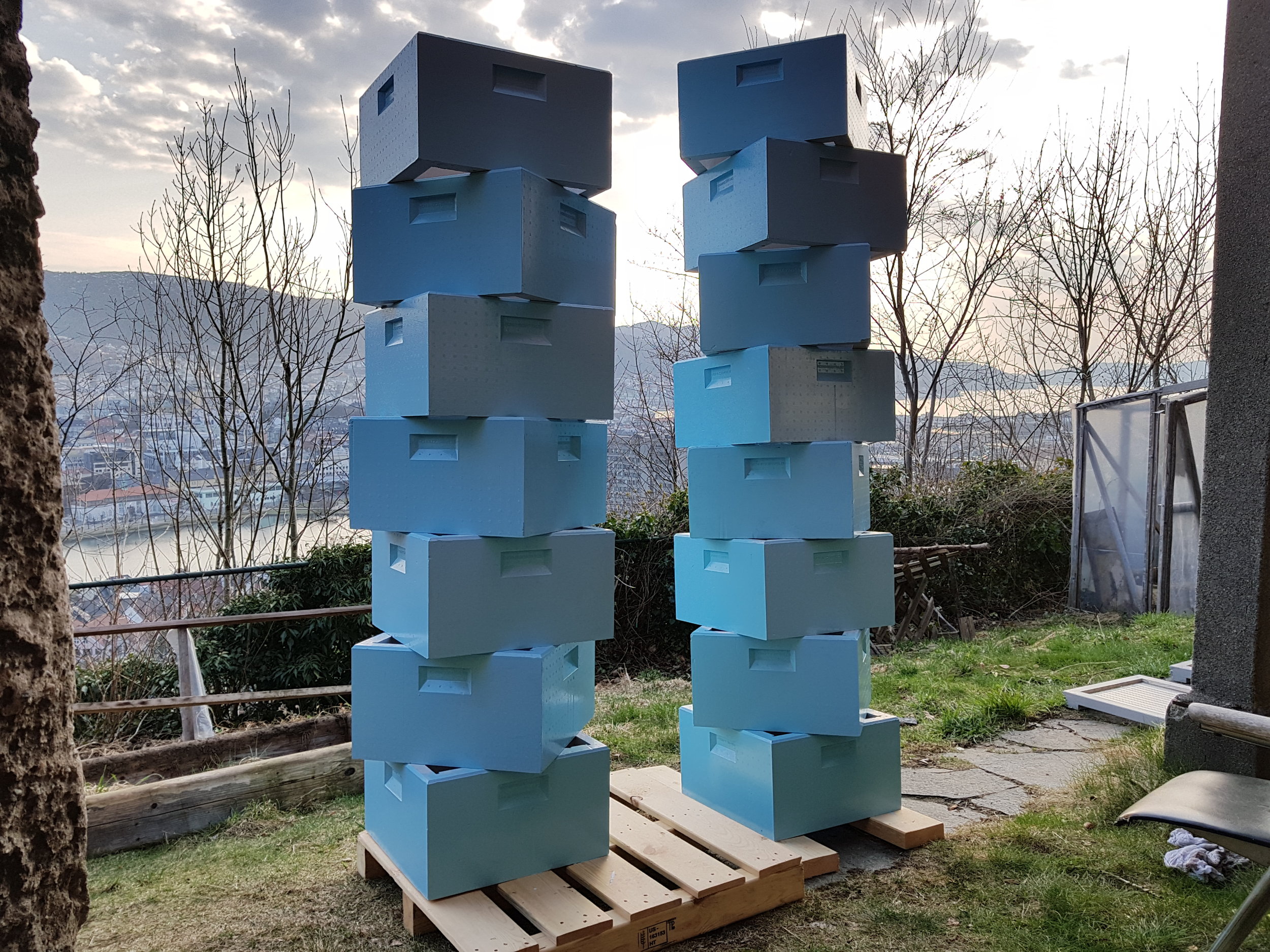
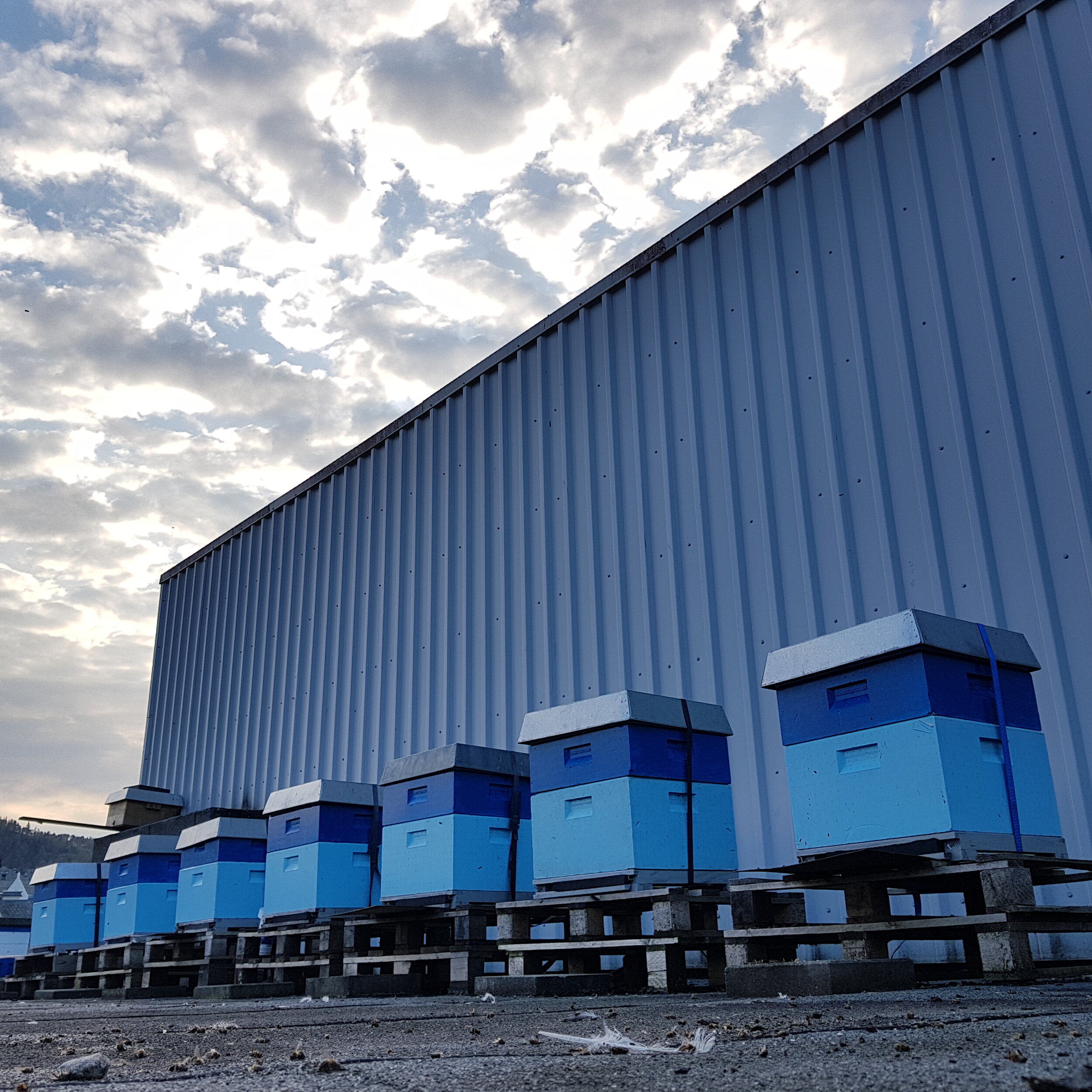
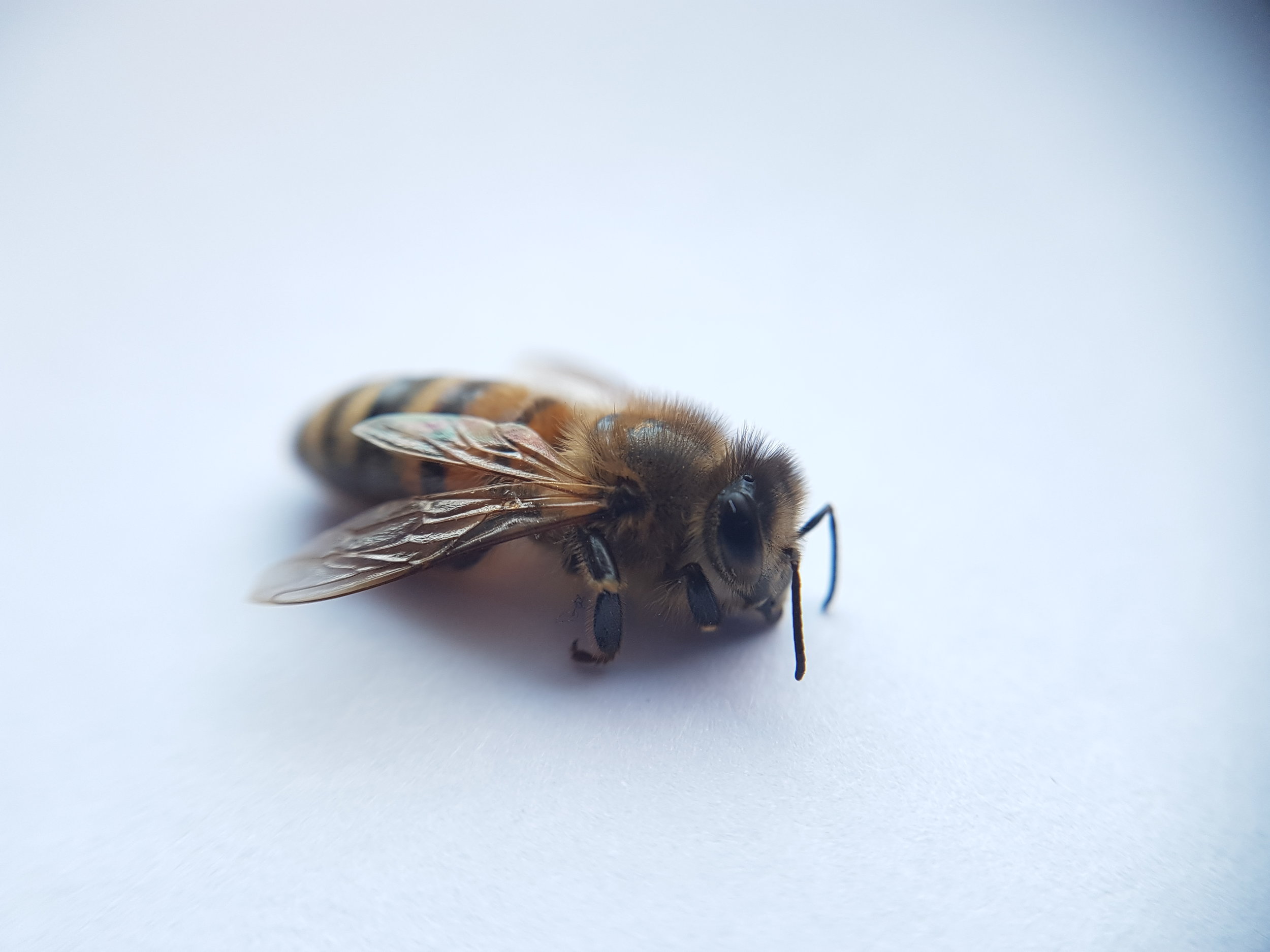
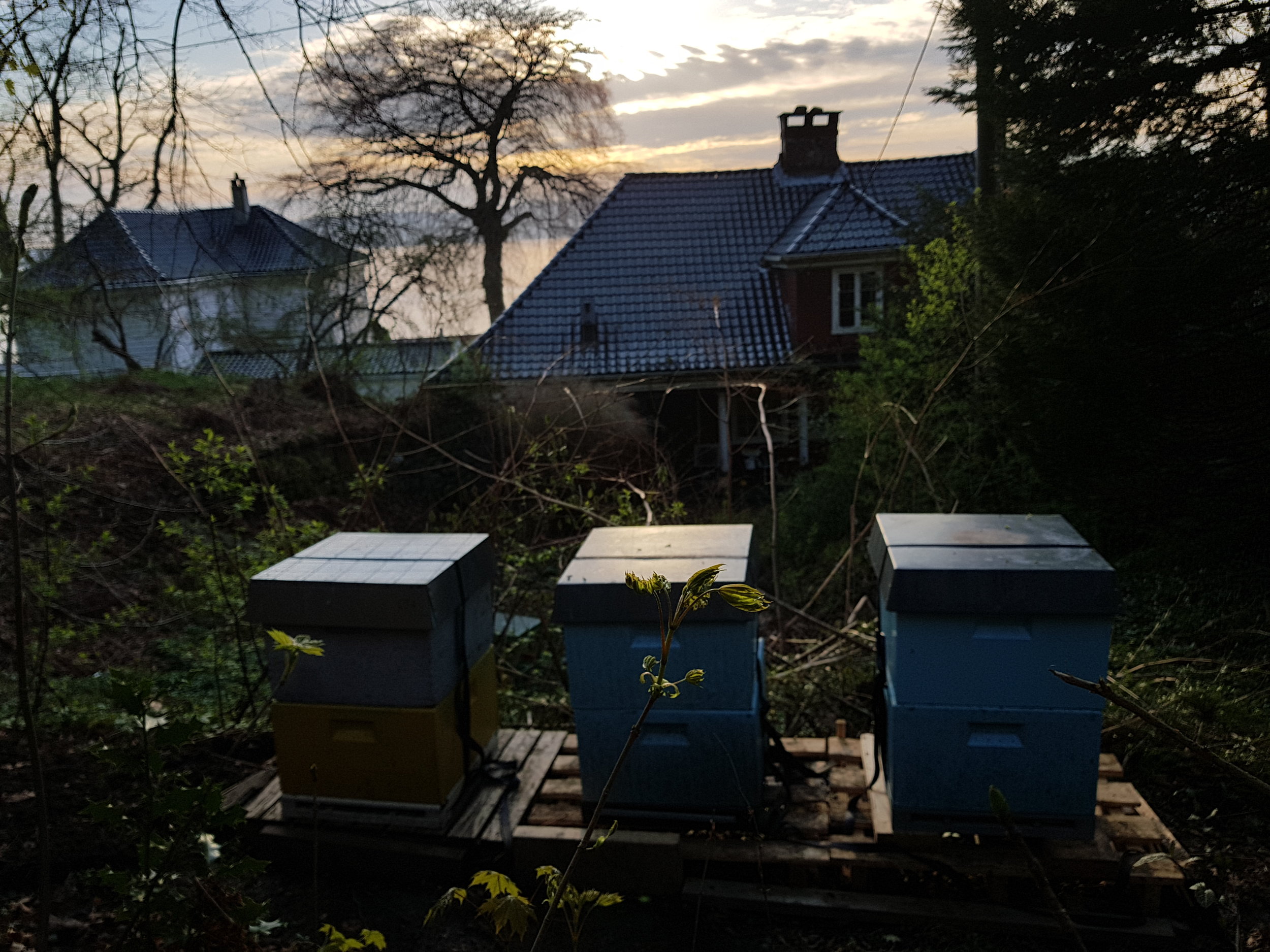

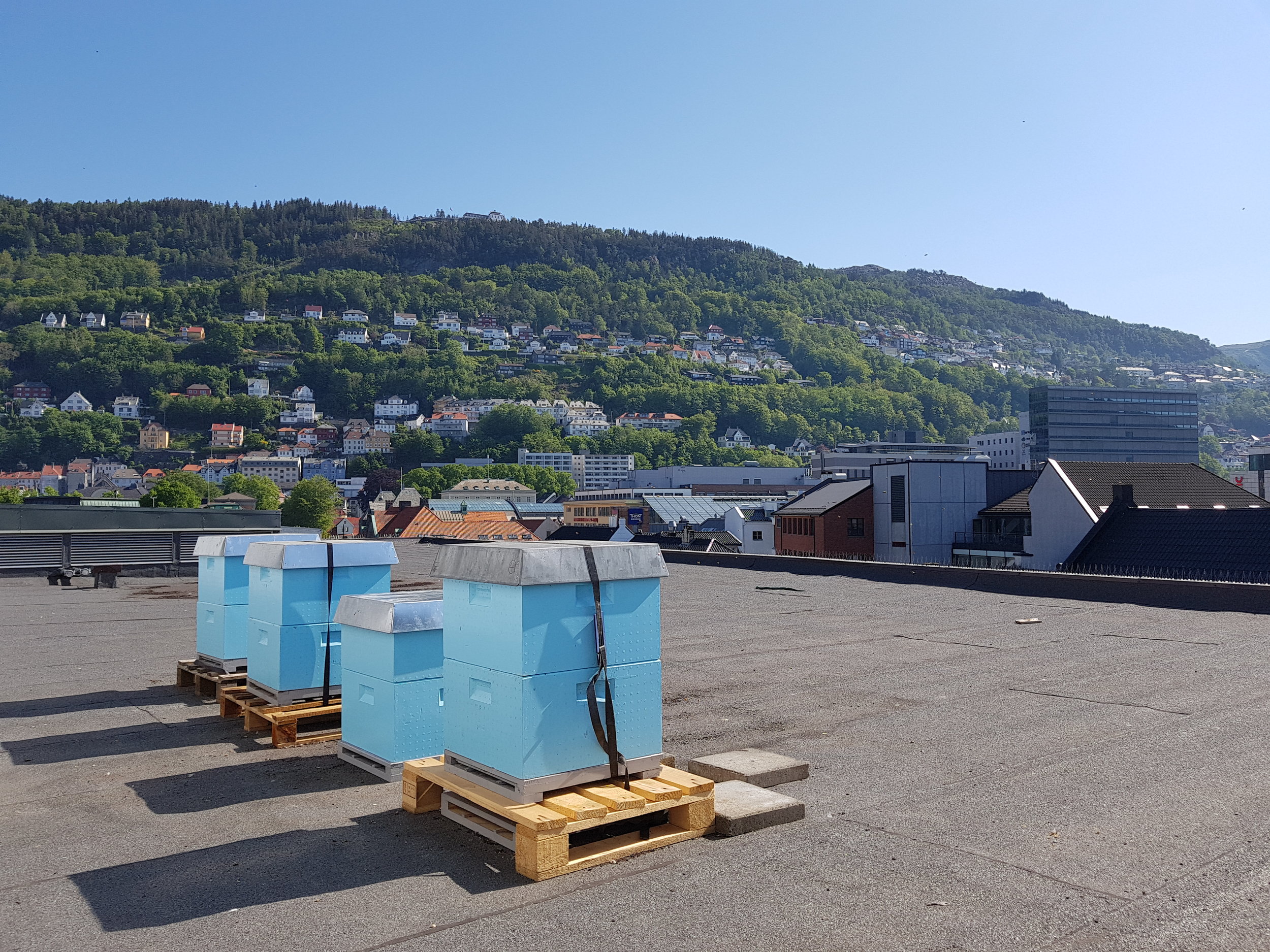
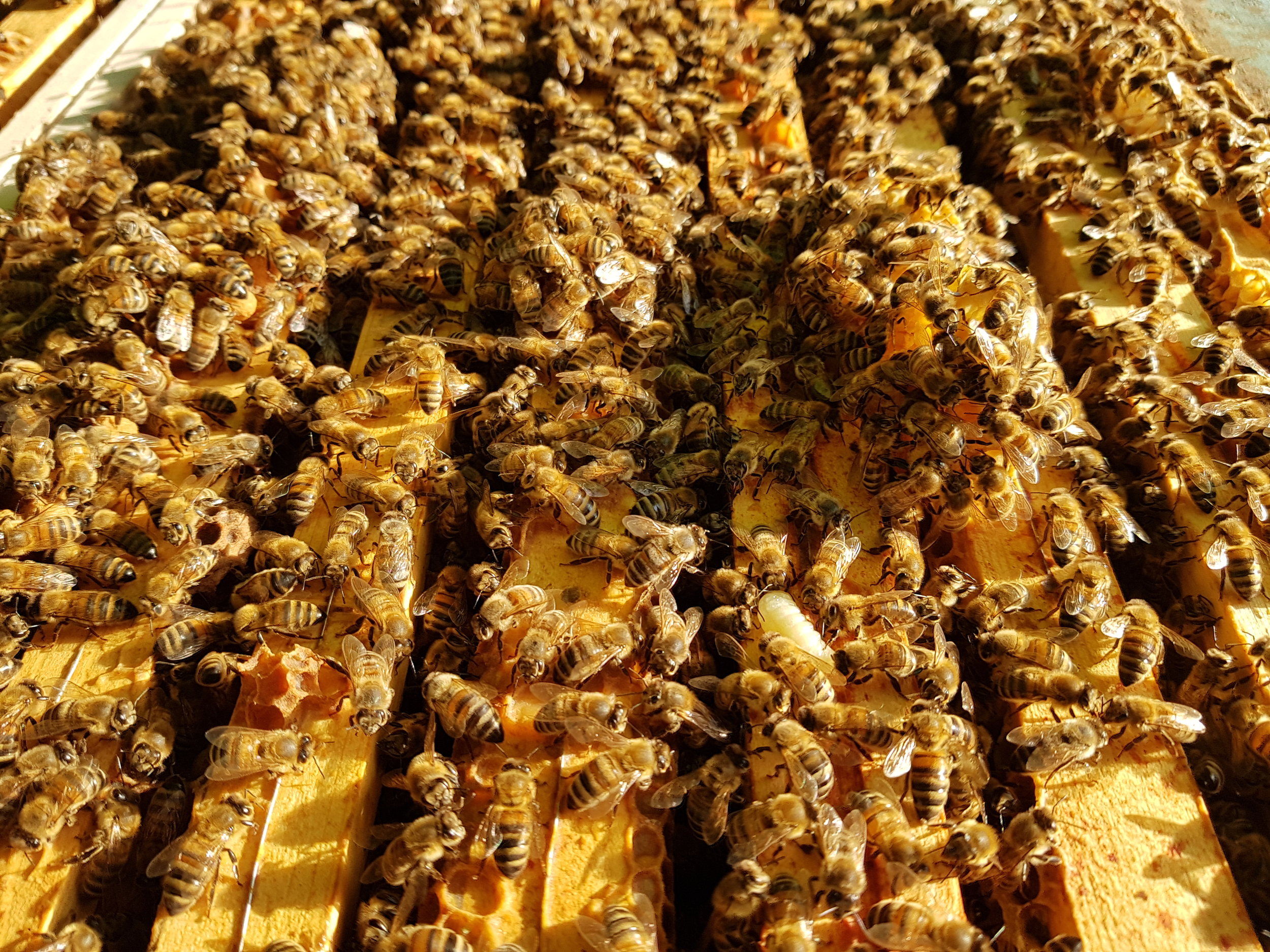
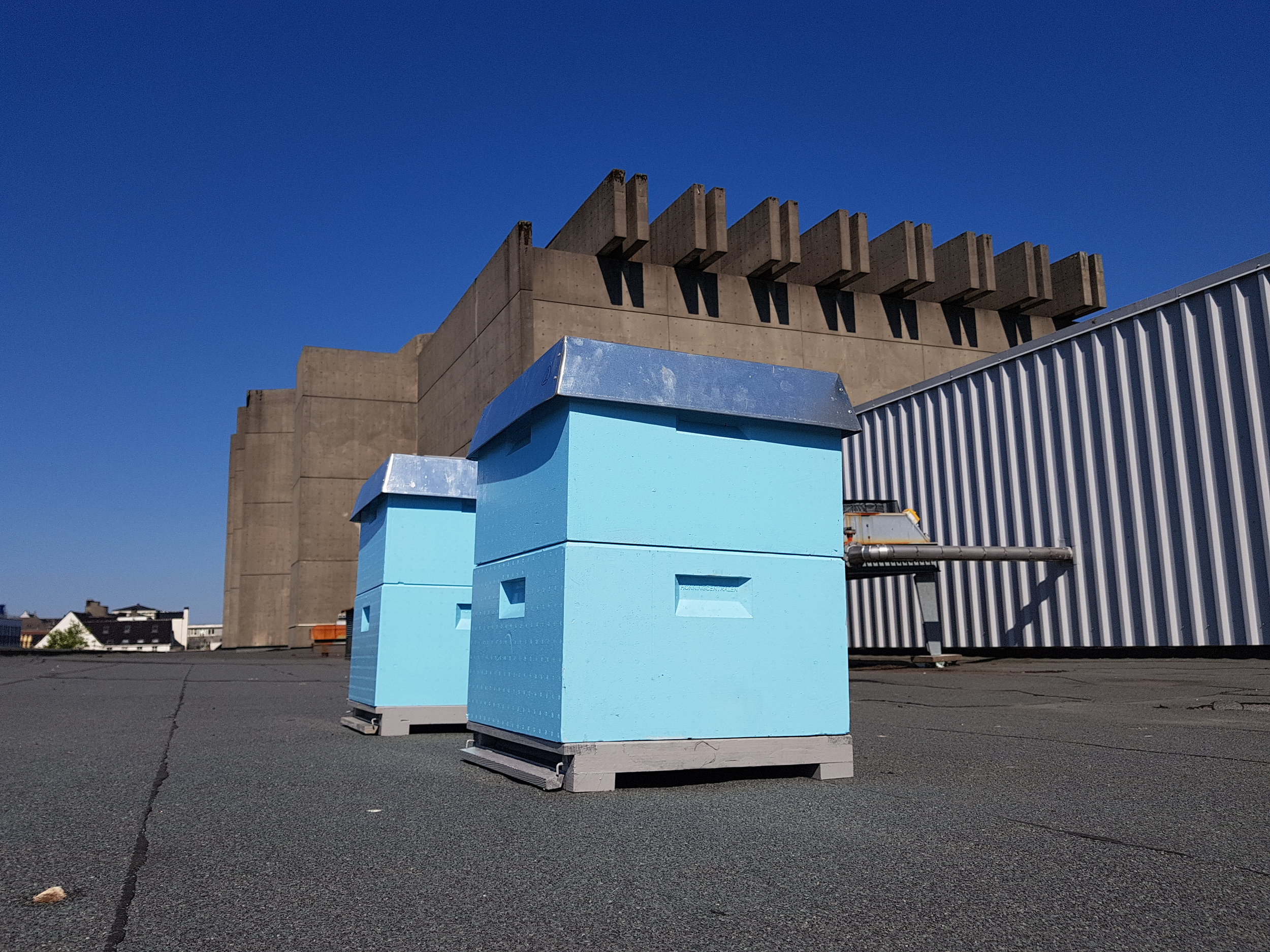
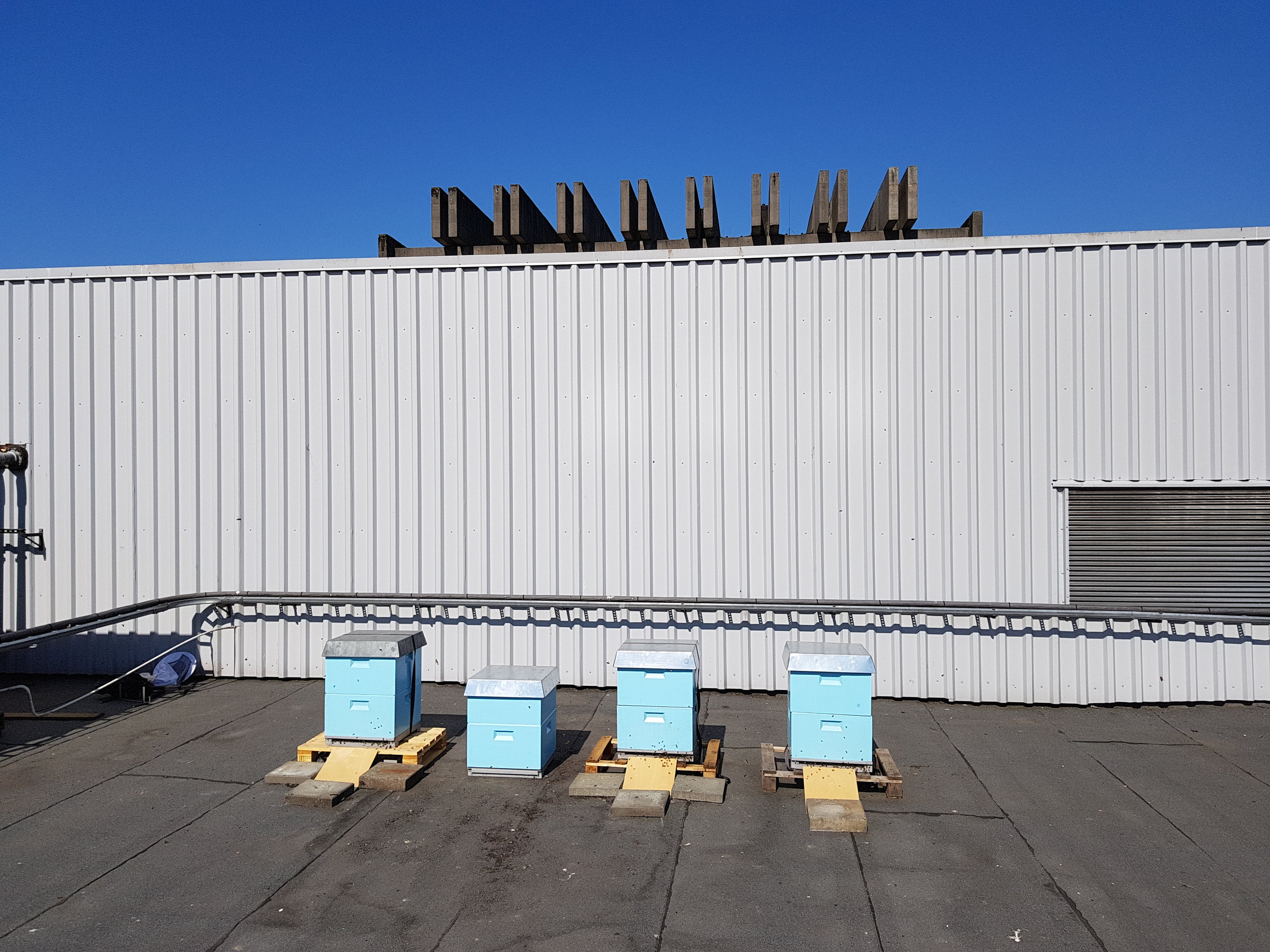
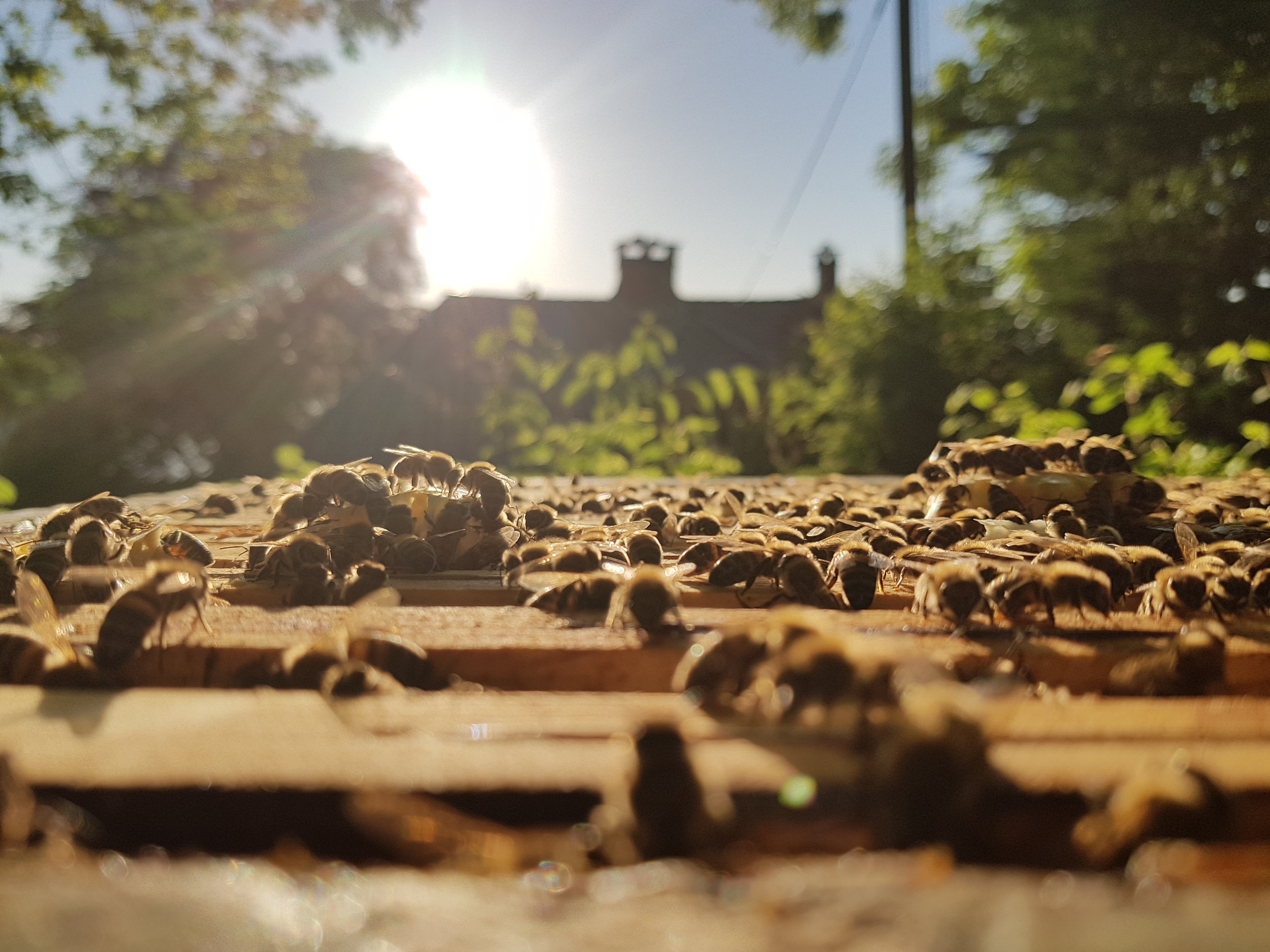
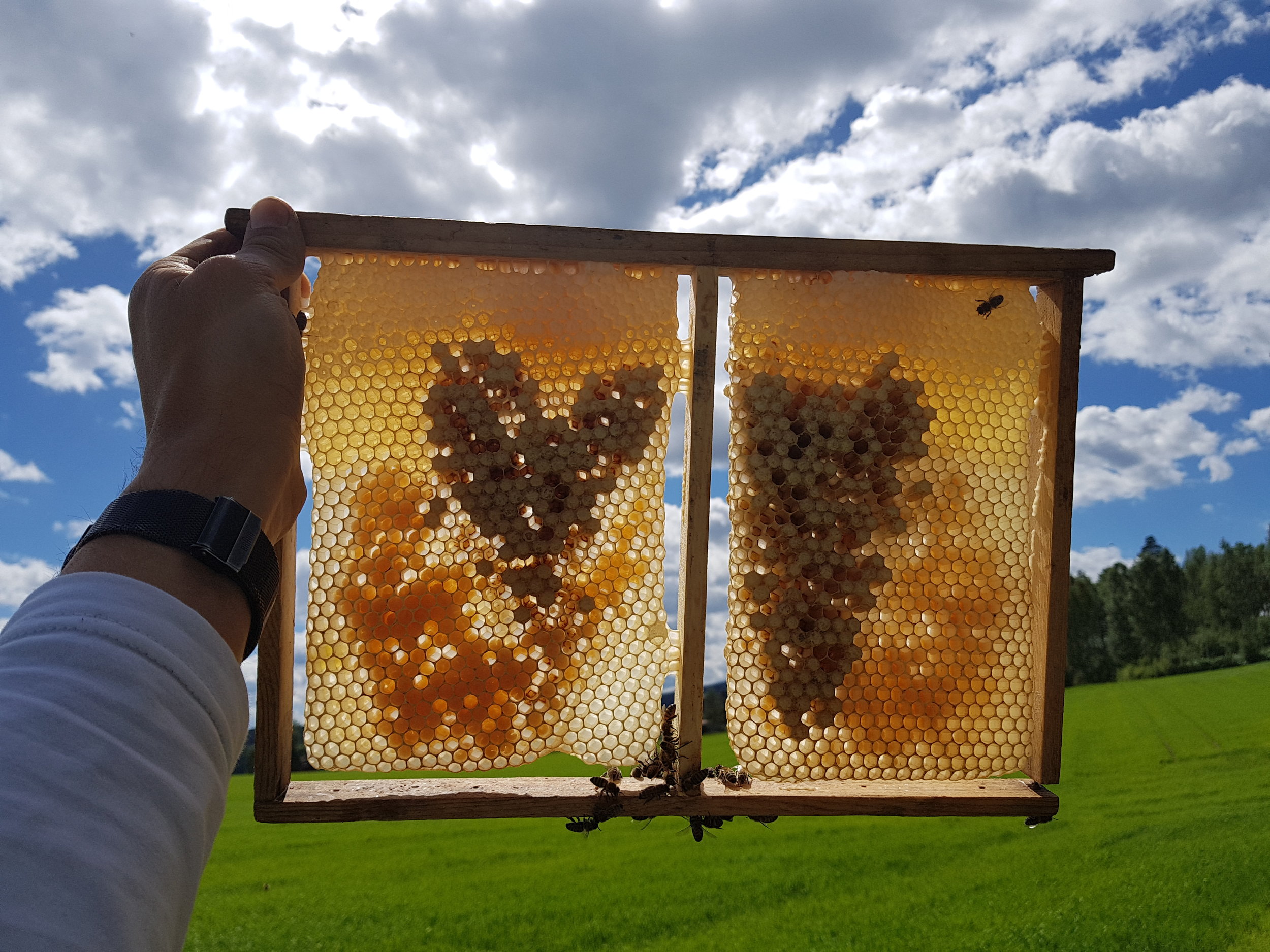
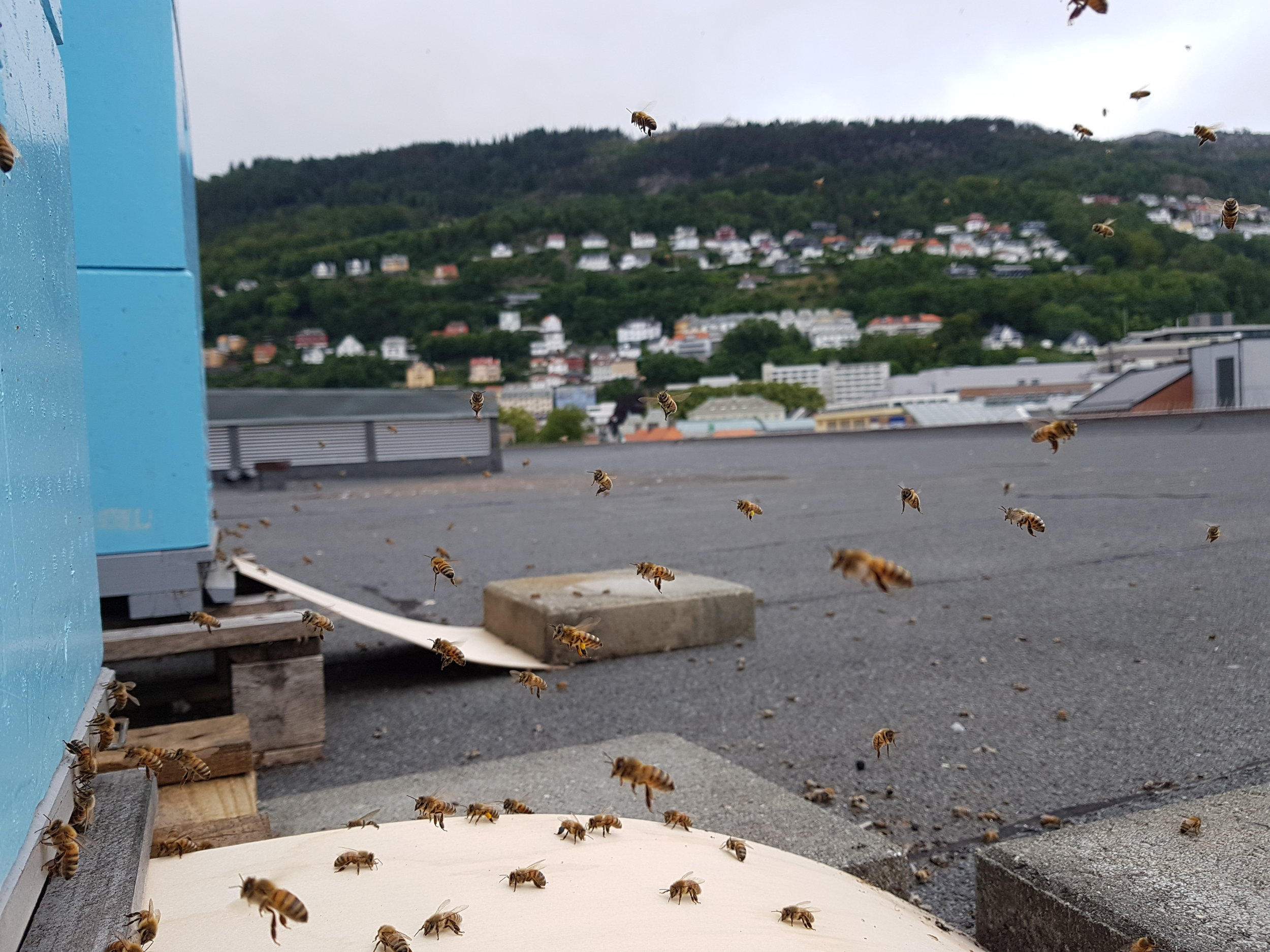
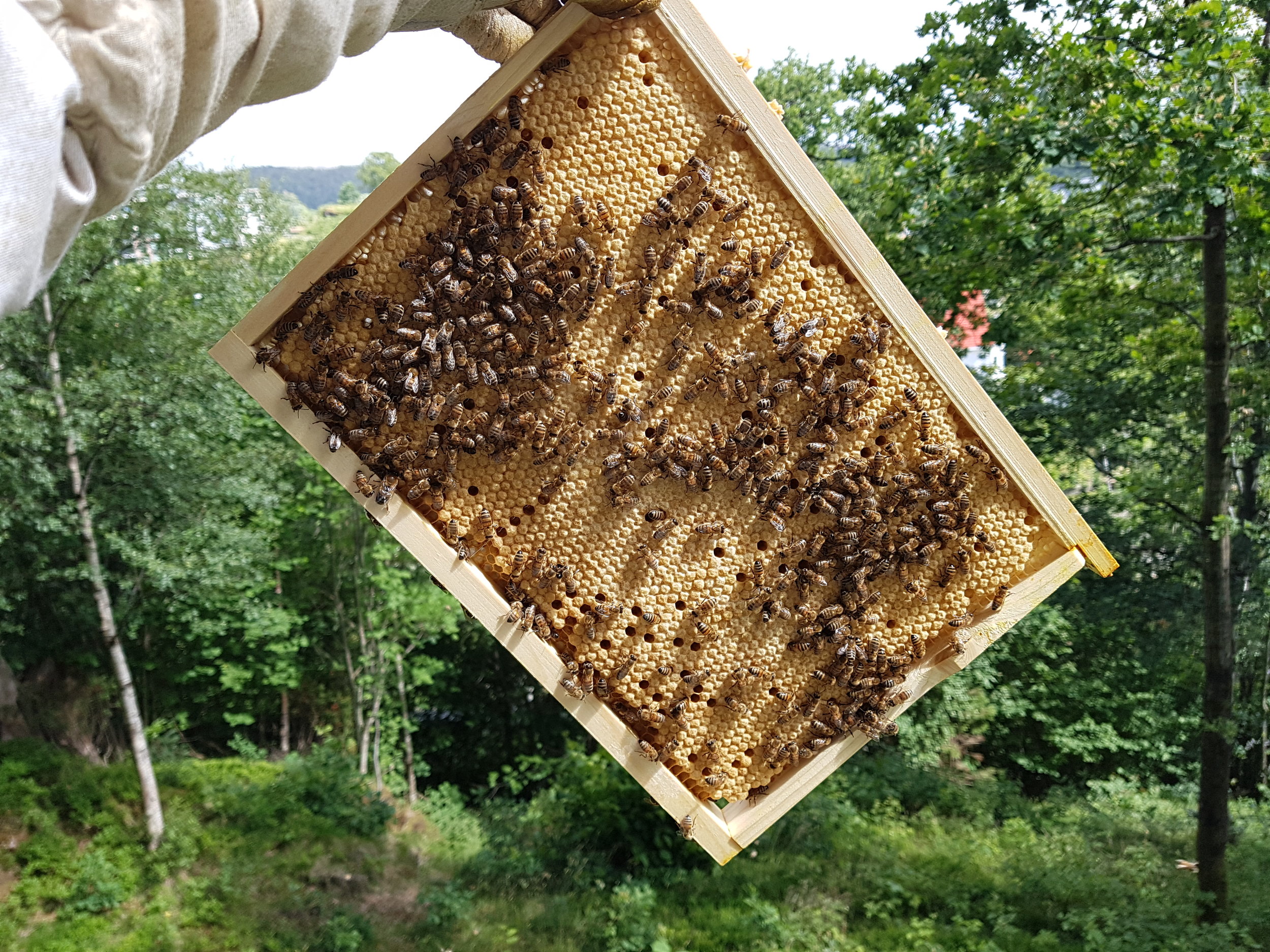
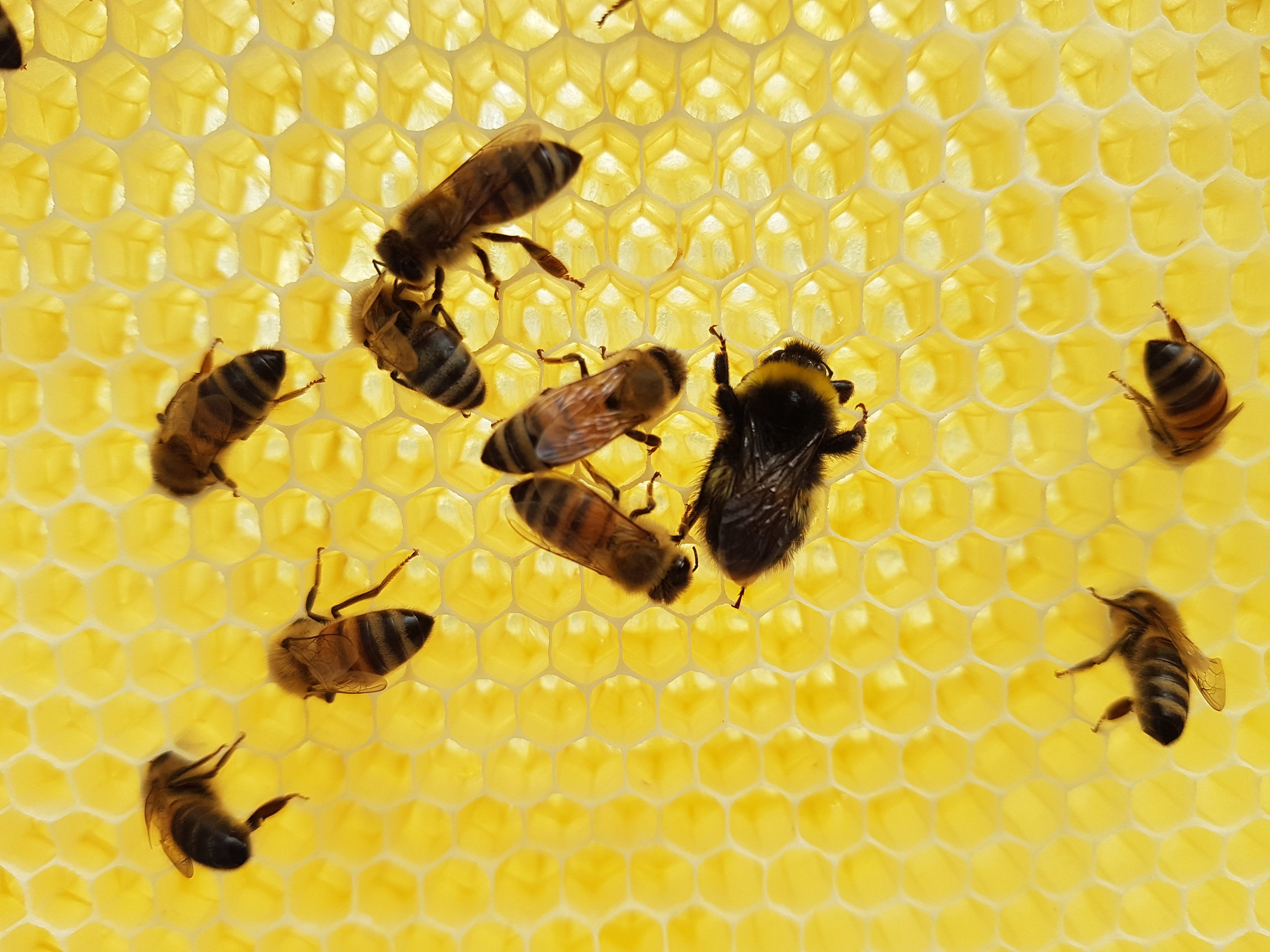

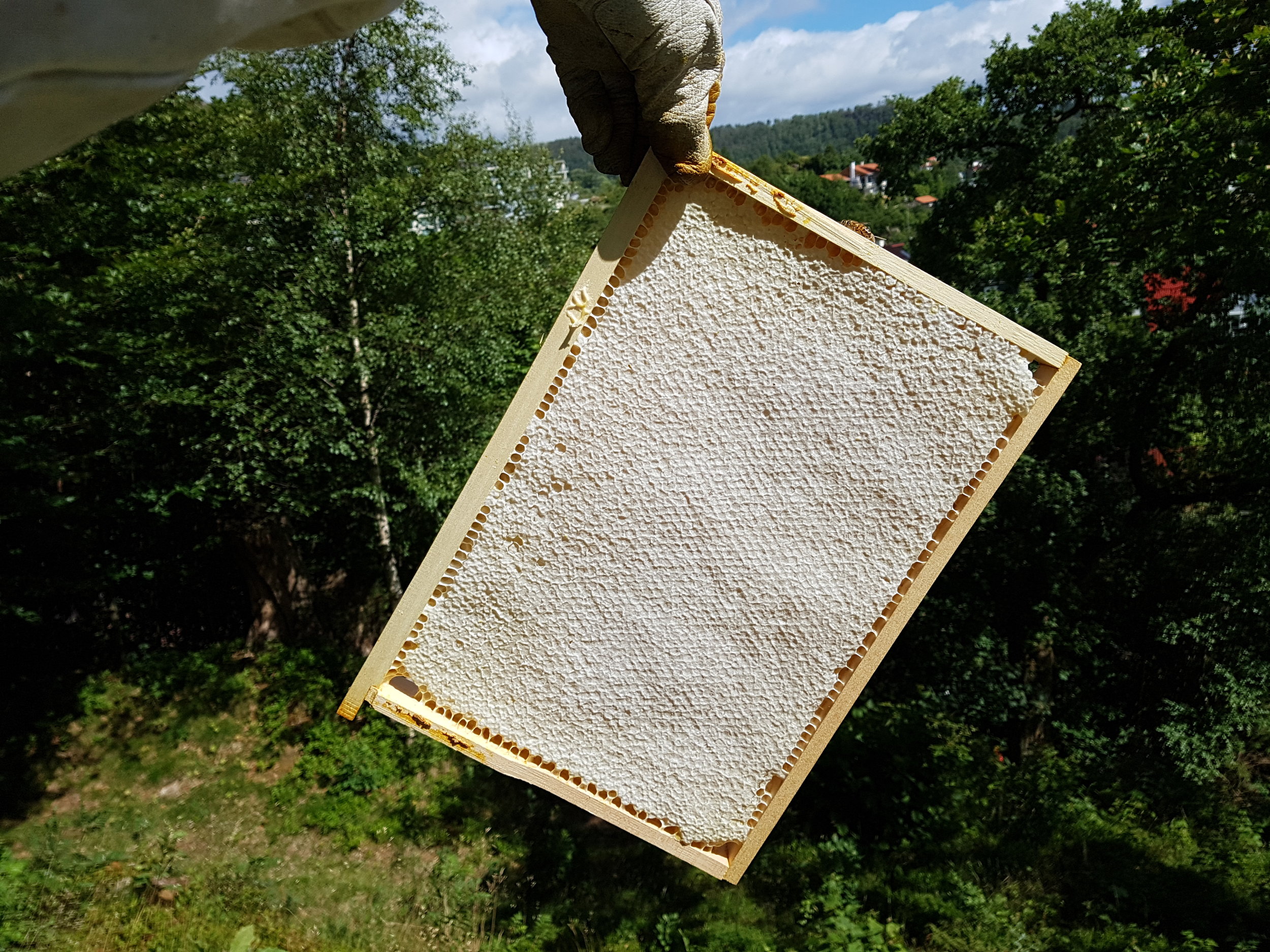
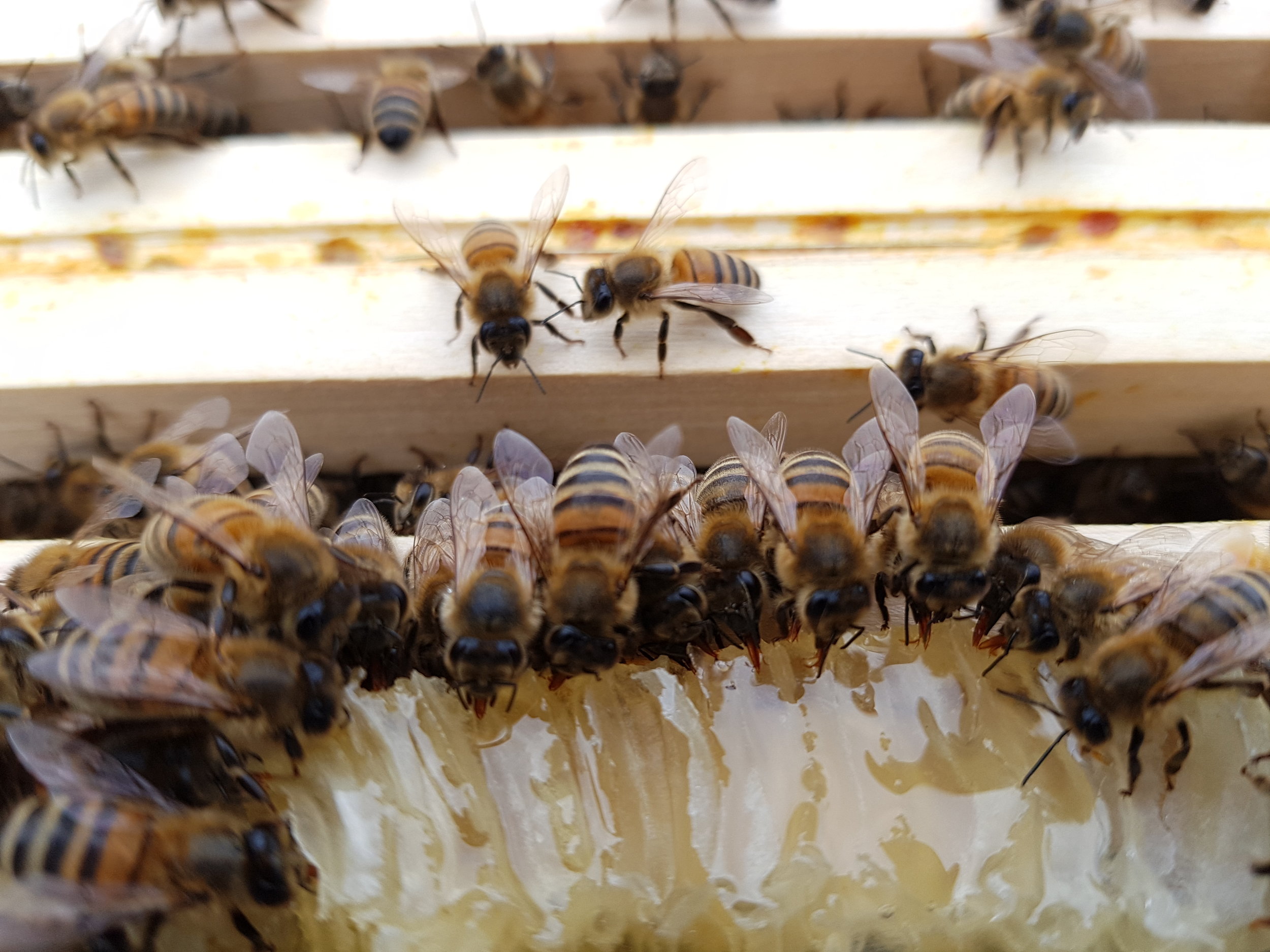
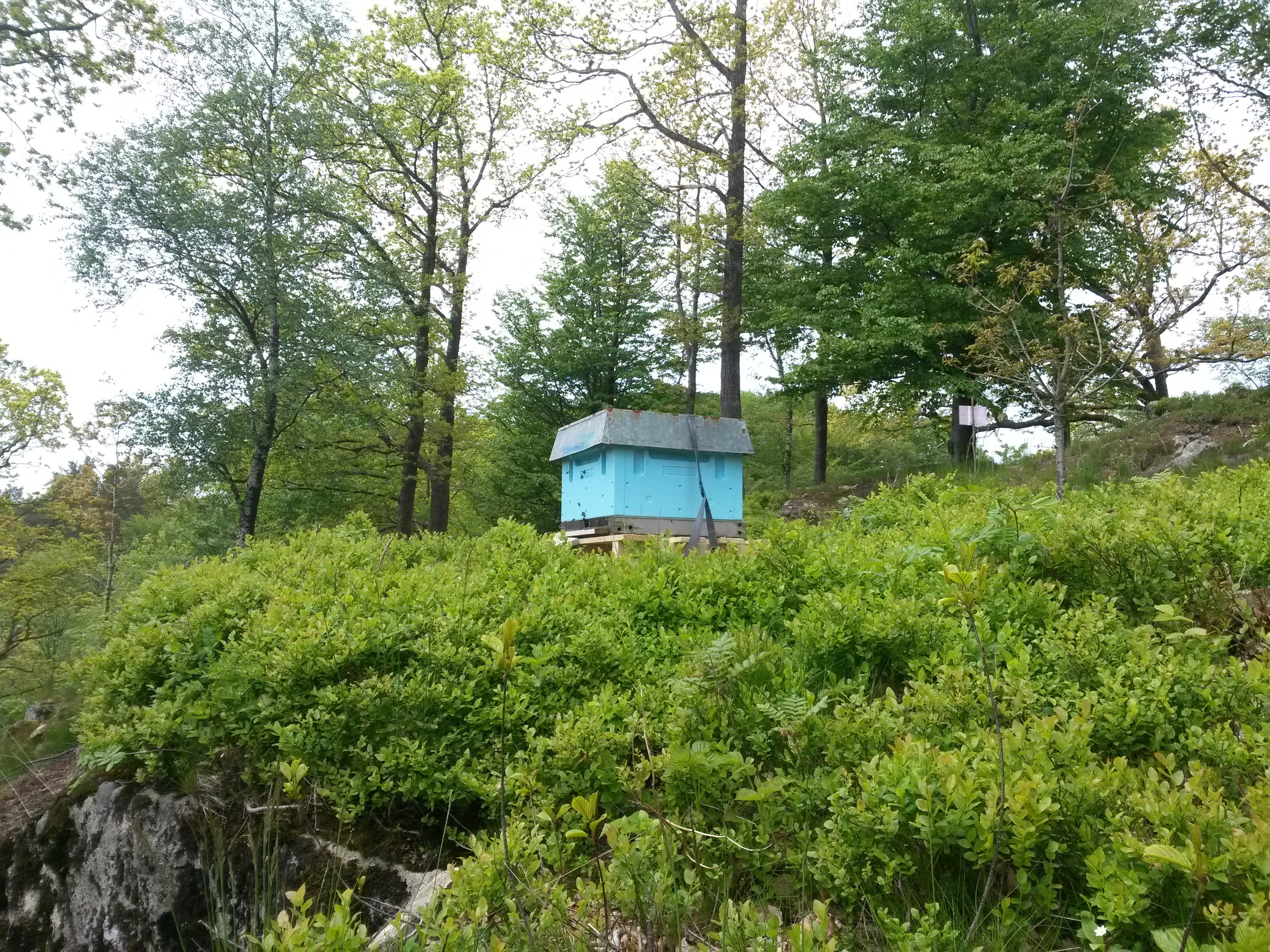
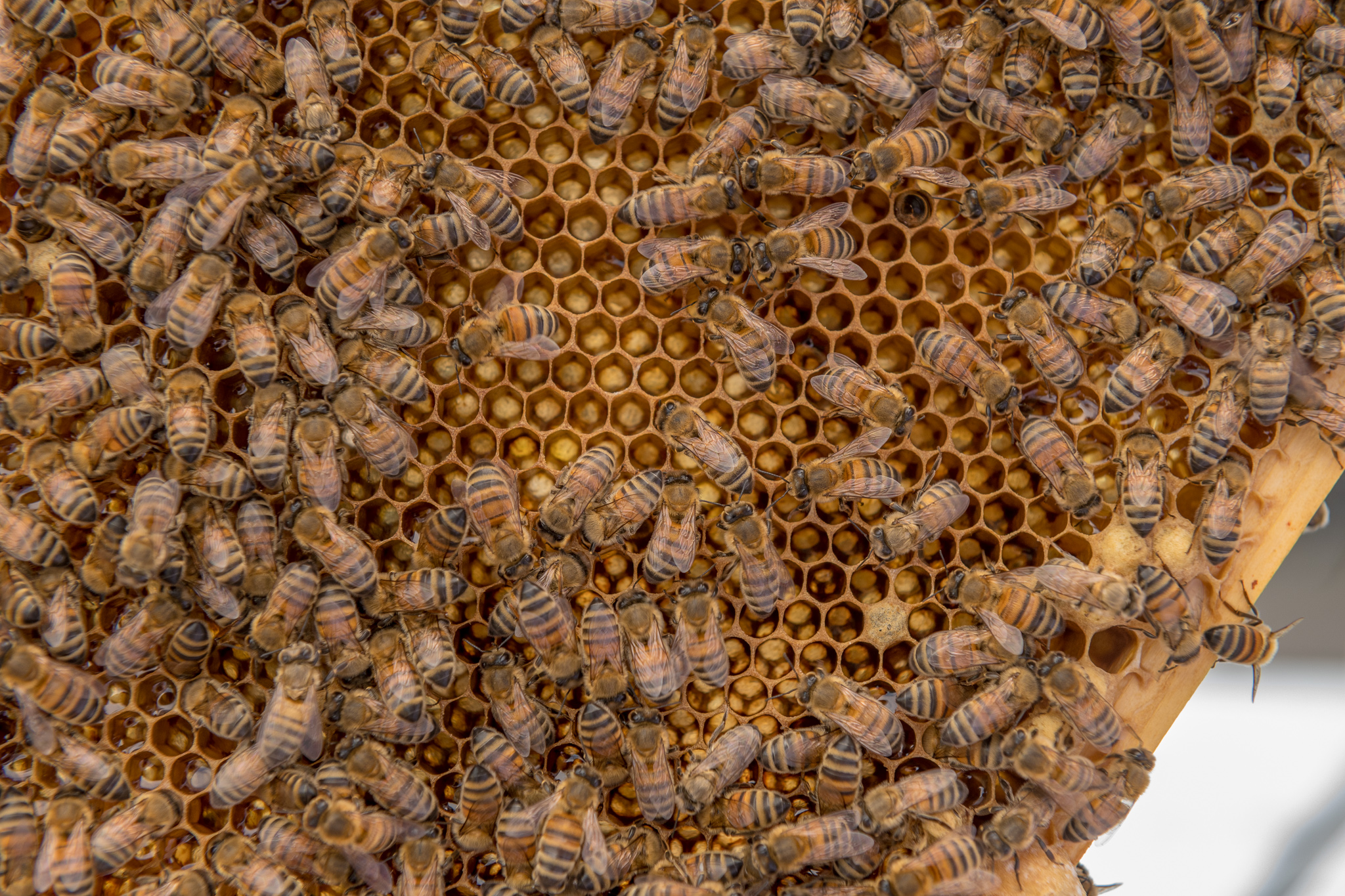

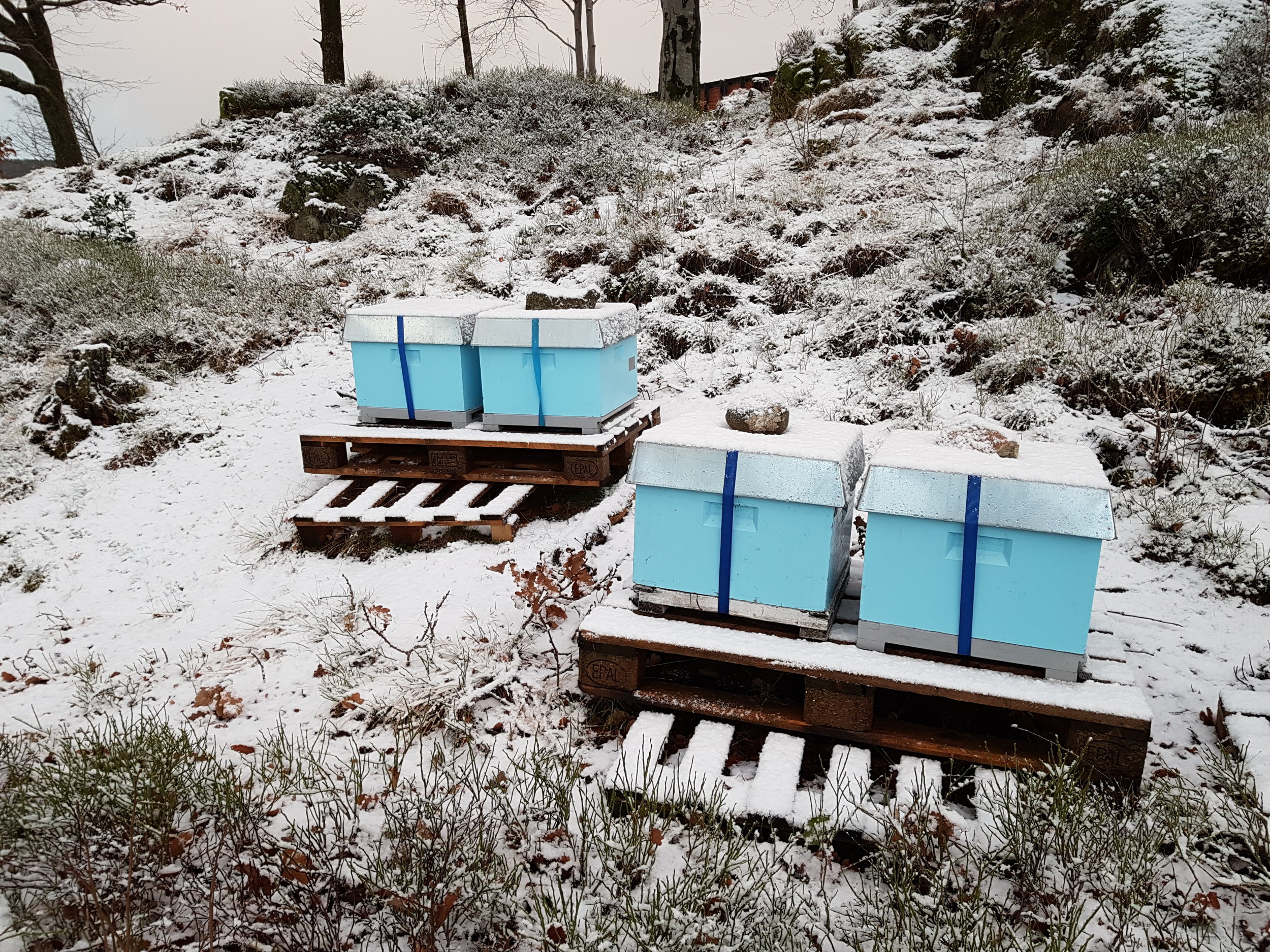
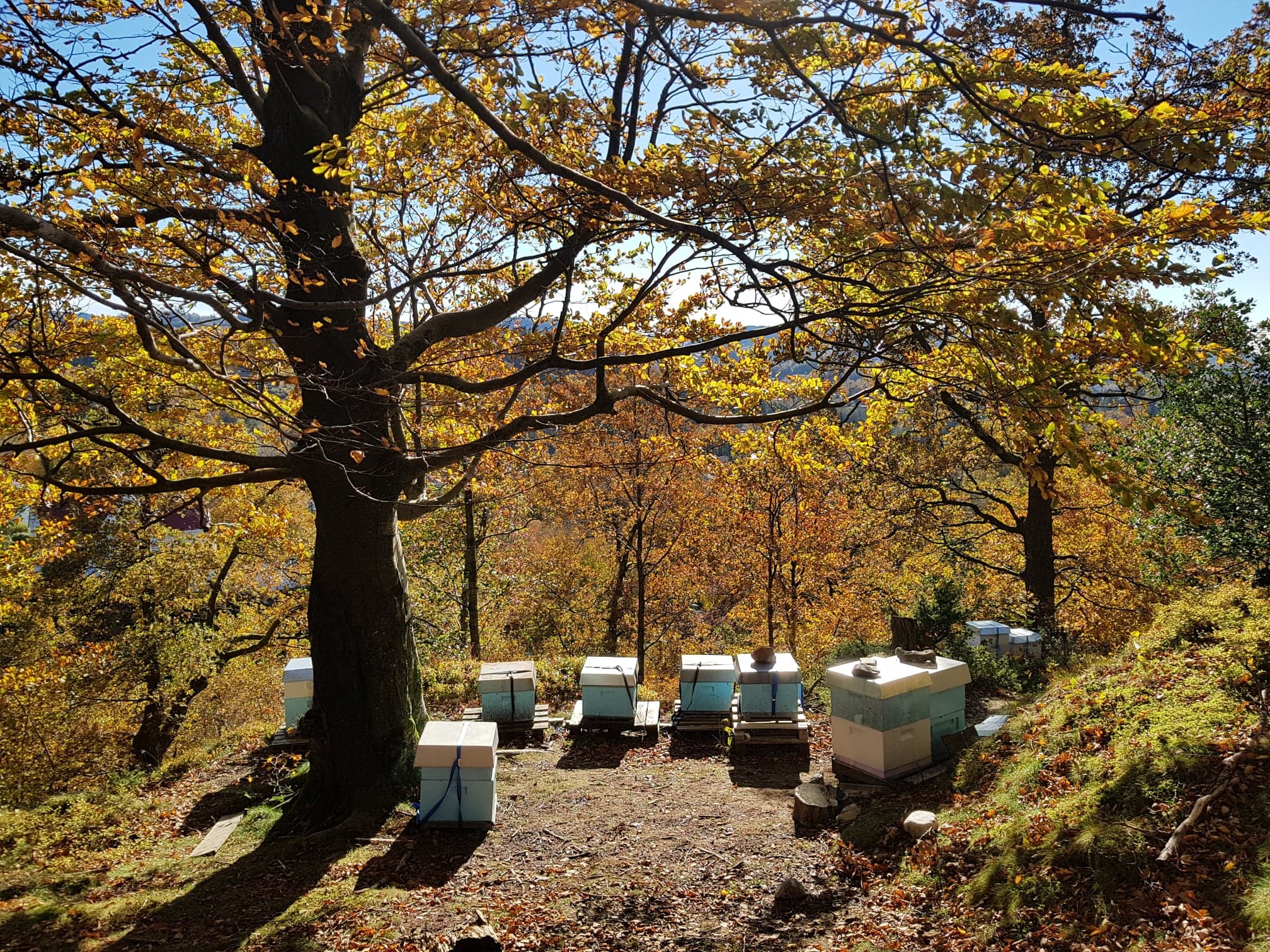
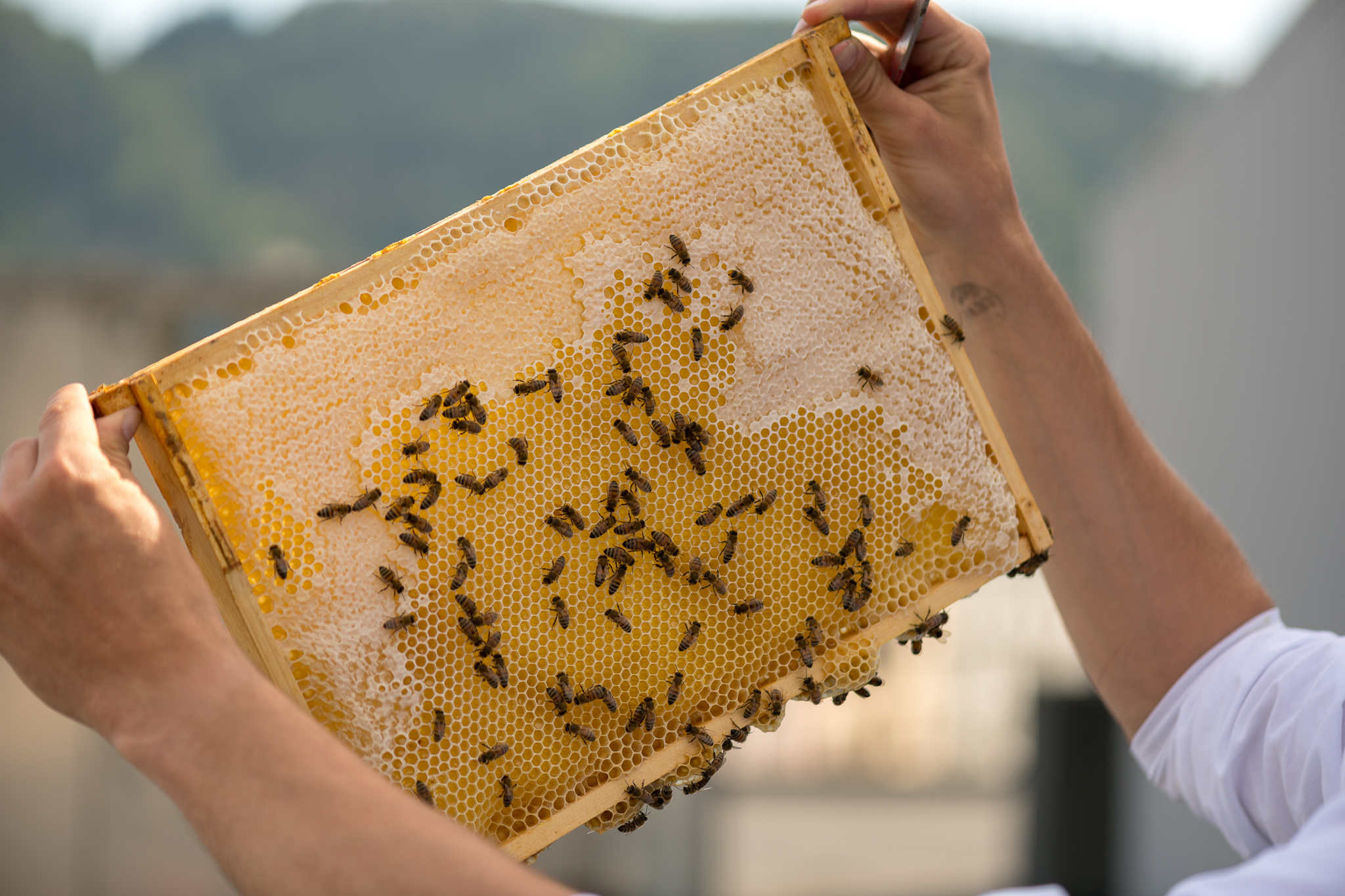
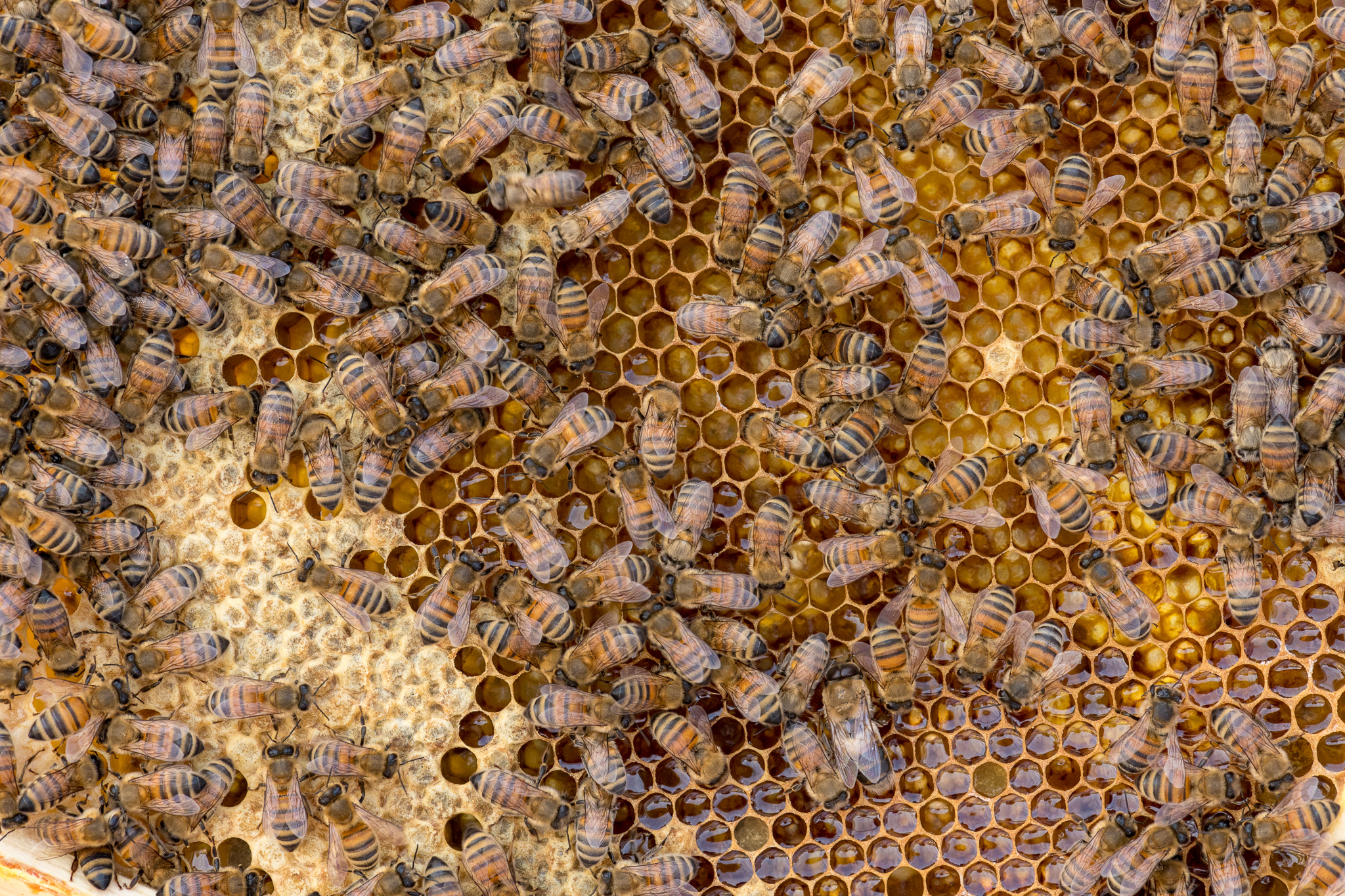
BEEKEEPING IN BERGEN
Contrary to what one might intuitively think, nowadays bees often find better conditions in urban environments. In the countryside, especially in agricultural areas, blooming periods are often followed by periods of little pollen and nectar supply. However, the flora in cities is of a very diverse nature due to human intervention and the introduction of trees, flowers and plants from all over the world in parks, avenues, botanical gardens, cemeteries and backyards. The constant nectar and pollen supply throughout the season, together with slightly elevated temperatures and the lack of commercial pesticide usage provides a great environment for the bees to flourish. We mapped all green spaces in downtown Bergen to visualize the great diversity that can be found in this urban environment.
ROOFTOPS
Looking at cities from above, one will notice that rooftops make up a huge part of a cities surface area, but are mostly not used in a purposeful manner. At the same time, they offer perfect conditions for the placement of beehives. Elevated from street level, they are safe from disturbance and the often dark roofs in combination with sunny locations provide a beneficial micro-climate that can create crucial extra days of flight in early spring. Rooftop beekeeping therefore offers a great option to reutilize and revitalize these underestimated spaces in a way that benefits ALL the cities inhabitants: Humans, plants and animals.
Green Spaces
Bergens green spaces range from parks, graveyards and meadows to avenues, forests and private gardens. The mix of native and introduced species offers a broad variety of pollen and nectar sources all year around. Nygårdsparken, festplassen, the botanical garden, Linden avenues and private gardens in Damsgård, Sandviken and Fløysiden all lie within the bees 1-3 km flight range and contribute to the diverse taste of the Bergen City Honey. Check the Honey section to see what that is all about.
URBAN FLORA
The floral diversity in urban and suburban environments is often way bigger compared to rural environments due to a magnitude of fine structured private and public curated gardens, parks and green spaces inhabiting a multitude of introduced and endemic species. We document the urban diversity to take pollen samples and compare the phenological seasons from year to year.
Follow the bloom in Bergen on instagram throughout the season: @bergen.botany.
CITIZEN SCIENcE
For oss er honning bare en del av de mange fascinerende emnene når det kommer til å arbeide med bier. Vi bidrar til ulike prosjekter som tar sikte på å forbedre miljøet i bikuben, samle data om vær og monitorere biene med sensorer på avstand.
Meet Je STAD
Meet je stad is a citizen science project run by the University of Amersfoort in cooperation with the University of Bergen. It aims on improving the resolution of weather data by providing affordable open source sensor kits to citizen. The data is transferred via the Internet of things LoRa network and open source for anyone to use. Our apiaries are equipped with these kits and report data on temperature and humidity.
Microclimate
Bees have lived in tree cavities for millions of years. These differ quite a lot from modern day beehives that bees are kept in today. This also has a big effect on the microclimate inside the hives. We are constantly trying to improve modern beehives and the inner microclimate to get closer to the original natural habitat conditions. We are therefore testing alternative types of top covers with integrated sensors. The results were presented at the Koppelting conference in the Netherlands in February 2019.
Open Hive scale
Openhivescale is an open source project developing improved scales for monitoring beehive weight. This helps to follow up on honey flows or recognize if certain hives are low on food supplies. In combination with our activities on improved top covers the scale helps to assess the effect on food consumption during winter time. We are currently operating and testing the scales on our beehives.


